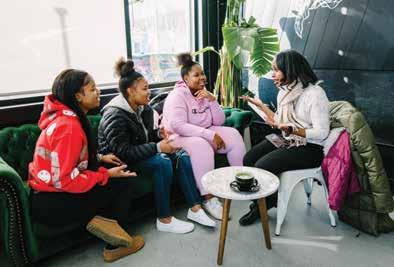Tips and Easy Swaps From Eco-Friendly Influencers







The first piece of this varied program, Rachmaninoff’s evocative and powerful score depicts Arnold Bocklin’s famous painting of an oarsman rowing a white-clad figure across a dark expanse of water to the mysterious Isle of the Dead . The mood lightens when the Háry János Suite from Kodály’s comic Hungarian folk opera radiates exotic exuberance. Then the renowned Gil Shaham gives the crowning performance of the program when he breathes life and love into the Beethoven Violin Concerto.
Discover more & purchase tickets ( $20–$98): madisonsymphony.org/shaham
John DeMain , Conductor Gil Shaham , Violin
Rachmaninoff , Isle of the Dead
Kodály , Háry János Suite Beethoven , Violin Concerto in D major
MAJOR SPONSORS
The Madison Concourse Hotel & Governor’s Club
Myrna Larson
The Burish Group at UBS
Audrey Dybdahl
Marilyn and Jim Ebben
David and Kato Perlman
ADDITIONAL SPONSORS
DeWitt LLP
Rodney Schreiner and Mark Blank
Wisconsin Arts Board

MAR 11, 12 & 13 FRI 7:30 PM SAT 8:00 PM SUN 2:30 PM

“Shaham’s performance was simply the best I have seen in more than three decades of attending the symphony.”
– Bill Wineke












What it’s like navigating the city with a disability, plus, local organizations that are working to make Madison inclusive to everyone.

These local organizations and women are raising up the next generation of athletes, creatives, thinkers and leaders.
A local couple aim to make family consumption habits greener using a “no guilt” approach.
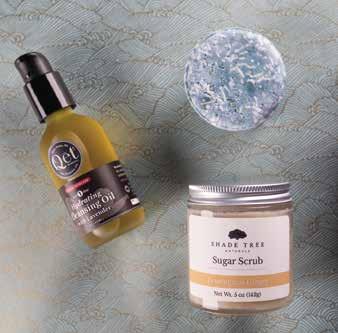

Corrina Crade Cunningham was photographed by Hillary Schave in her home.
Read more about Crade Cunningham on P. 39.


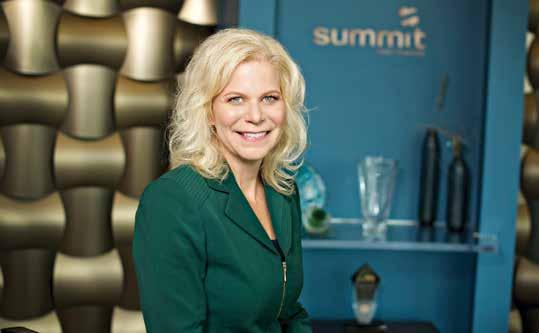
BY KIM SPONEM
My kids are always asking me for money. It’s hard to say no to them, so how do I get them involved in our family budget?
Children can be involved in a family budget. In fact, we encourage active participation by all family members in our Project Money competition. Participants with children have told us that bringing their kids into conversations around money has helped prepare them for their financial future and even helped curb the “asking for money” issue you describe.
Depending on your kids’ ages, here are a few ideas.
• Going to the grocery store? Let’s say you budgeted $100 to spend. Including them on what the family will eat with that $100 will give them a math challenge and set a natural limit on how many snacks to include. Involve your kids in the family’s budgeting and planning. Ask for input and feedback about the budget that directly affects them, like groceries.
• Understanding how much is set aside each year for gifts is something you can work on at almost any age. If they know you will spend $50 on their birthday, they’re likely to develop their list of ideas more thoughtfully, considering how badly they may want certain things.
• Going on a vacation or staycation? Plan it out together, including daily spending limits. That will help drive food and activity
choices and trade-offs. “We can do this and this, but not these things. If we do this more expensive activity, that will be the only one for the day.” I have found that most of the time, they don’t think about how much the activity is when you pay for the entire family.
• When they are in middle and high school, consider sharing monthly expenses with them such as how much your electric bill is. Create a competition around how the family can lower the bill over a six-month period. Even simple things, like unplugging appliances not in use, saves electricity. You might even get them to turn the lights off when they leave the room (smile). Creativity in reducing this expense can be fun. And, the electric bill savings could go toward something the family wants to do together. You and your teens can do the same thing with other bills like:
o Your car payments (mark on the calendar when it will be paid off and then put the same amount of payment into a savings for your next car down payment)
o Car insurance (discounts for good grades and driving records)
• You can also add budgeting options throughout the year for school-aged kids. This month, you could provide a list of tasks that would help get ready for the holidays and allow them to earn money for their own giving. I used to put money in an envelope each week of summer break and my kids could decide how they would spend it. Once it was gone, it was gone, unless they wanted to earn more through different tasks around the house.
• If you have a young adult in the family, I’d highly recommend you visit SummitCreditUnion.com’s Money Smarts page and check out FoolProof™. It’s an online resource by and for young adults geared to help them avoid costly money mistakes.
• You might set a family savings goal that everyone is excited about and that they can help you reach. Experiencing the reward of saving is powerful.
All of these things help to create a good understanding of how much things cost and a foundation for budgeting skills when they are adults. You’re giving them a long-lasting gift in their first steps to financial independence.
Kim Sponem is CEO & President, since 2002, of Summit Credit Union, a $4.8 billion, member-owned financial cooperative with more than 224,000 members. Kim has a passion for empowering people to improve their financial well-being for a richer life.
Ask Kim your money questions at MoneySmarts@SummitCreditUnion.com.
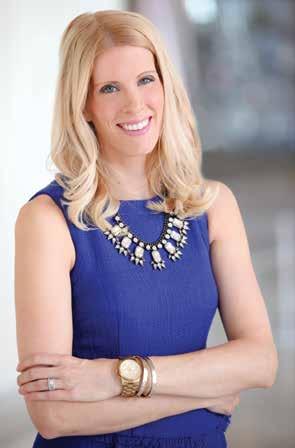
At BRAVA, we’re committed to telling the stories of women in our community. In every issue you’ll see a cross-section of Madison, whether it’s women who own their own businesses, are grandparents, identify as LGTBQ, are sharing their struggles or are differentlyabled. (That’s not a comprehensive list, of course!) As we enter our 20th year in publishing, it’s important to us that BRAVA continues to reflect our city — and the myriad of stories and experiences women have to share.
Passing on our experiences and working with the next generation of girls is of utmost importance, too. I have a five-year-old daughter, and I am always cognizant of how my words and stories have a huge impact on her. One thing I frequently tell my kids is, “We can do hard things.” (And trust me, I’ve repeated this same mantra to myself during stressful times!) I’ve heard my daughter say it now on her own, and it makes me proud that in this small way, it’s instilling a can-do attitude in her.
There are so many women in the Madison area that are empowering our girls to do big things, encouraging confidence and teamwork, and teaching new skills. We highlight some of these women in our “Girl Power” feature starting on P. 28. And, interestingly — four of the seven women we spoke with are also past Women to Watch. You’ll want to check out this story if you have a daughter, granddaughter, niece or special girl in your life.
We also share the stories of three women who are differently-abled in
our “Truly Accessible” feature (P. 50). Jennifer Diedrich (shown on P. 3) has Spina Bifida and uses a wheelchair. She says she has to plan outings carefully, knowing she may not be able to enter or access certain businesses in New Glarus, where she lives. It’s something a lot of us don’t have to think about. But sharing perspectives from differentlyabled people (that quite frankly, isn’t done enough in media) is important, and something we’ll keep doing.
And if our cover shot intrigues you, then you’ll want to read about Corrina Crade Cunningham and her husband, Patrick, on P. 39, who founded The Mindfluencers, a website, TV show and social media channels that share easy green hacks and highlights earthfriendly, Madison-area companies. The couple is trying to make a difference in their own way by sharing actionable advice for families on how to be a little more eco-friendly, every day.
Finally, don’t forget to RSVP for our Women to Watch Soiree on Tuesday, April 26! The soiree was rescheduled from its original date in January — and we are so excited to finally celebrate our 2022 honorees. RSVP at: bravamagazine.com/w2w.
We hope you enjoy this issue, and let’s look forward to an uplifting spring.

Shayna Mace Editorial Director @shaynamace
I’ve continued to implement more earth-friendly products into my routine. Here are some I love, in honor of Earth Month.

Bamboo reusable rounds are my go-to in the evenings to remove eye makeup and apply toner. It’s great that they’re washable, and it cuts down on my use of disposable cotton rounds. You can find them in multiple locations — I’ve even seen them at Target — but Green Life Trading Co. is a great local spot to purchase.

I love Alaffia’s products — I use their Lavender Body Wash and my kids use the Lemon Lavender Shampoo & Body Wash. Based in West Africa, it’s a minority-owned, social enterprise brand that works to improve education opportunities, create jobs and pay fair (above market) wages. Women’s cooperatives in West Africa handcraft the raw ingredients to make their natural bodycare products that are free of parabens phthalates, sulfates, mineral oil and petrolatum.

I get bored with drinking plain water all day long. So, I like to flavor a glass or two a day with a few drops of an essential oil , such as lemon, grapefruit or even lavender. (I always use food-grade oils that can be used in cooking and baking.) Just 2-3 drops in a 16-ounce glass lends my water a refreshing, subtle taste. And, it cuts down on my disposable plastic bottle usage if I’m craving flavored water.
BUSINESS
PUBLISHER
Barbara Krause bak@ntmediagroup.com
VICE PRESIDENT OF PUBLICATIONS
Becky Peck bpeck@ntmediagroup.com
EDITORIAL
EDITORIAL DIRECTOR
Shayna Mace shayna@bravamagazine.com
FACT-CHECKER
Kaleigh Krause ktk@ntmediagroup.com
GRAPHIC DESIGNER
Jerriann Mullen jem@ntmediagroup.com
SALES
SALES MANAGER
Dena Frisch dena@ntmediagroup.com
ADVERTISING COORDINATOR
Amy Jacobs ads@ntmediagroup.com
CONTRIBUTORS
Julie Nor-Barber, Emmy Bawden, Mason Braasch, Kayla Collins, Katherine Lawless, Katy Macek, Shelby Rowe-Moyer, Annie Rosemurgy, Hillary Schave, Jessica Steinhoff, Sue Sveum, Candice Wagener, Hannah Wente, Shanna Wolf
BRAVA Magazine is a publication of Nei-Turner Media Group, Inc. Gary E. Nei, Chairman, William Turner, President. This issue or any part thereof may not be reproduced in any form without written permission from the publisher. All rights reserved. ©2022
951 Kimball Lane, Suite 104, Verona, WI. (608) 848-6700

SUBSCRIBE AT BRAVAMAGAZINE.COM
Subscription information: (262) 729-4471 or bpeck@ntmediagroup.com.
BRAVA (ISSN 1934-4317) March/April 2022, Volume 23, Number 02, is published bimonthly (six times a year) by Nei-Turner Media Group, Inc. Periodicals postage paid at 3902 Milwaukee St., Madison WI 53714 and additional offices. Subscriptions are $12/year. Postmaster send address changes to: BRAVA Magazine, 951 Kimball Ln., Ste. 104, Verona WI 53593-1786.
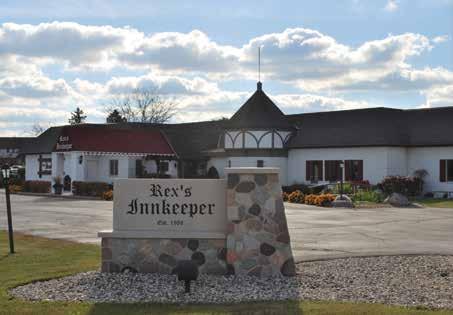




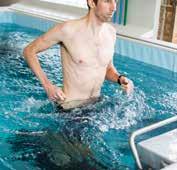


Clockwise from top left: Perfect Imperfections 608 Floral Facial Steam, $20 ; Luminous Rose Night Recovery
Pressed Serum, $52 ; KOSA Spa Pitta Hand & Body Lotion, $22 ; Qēt Botanicals
Restoring Day Serum, $65 ; Shade Tree Naturals Lavender Lemongrass Body Butter, $16 and Shade Tree Naturals
Rosemary Mint Lip Balm, $4.50 ; KOSA Probiotic Deodorant Spray, $15 ; and Luminous Rose Blue Butterfly Eye Serum, $36
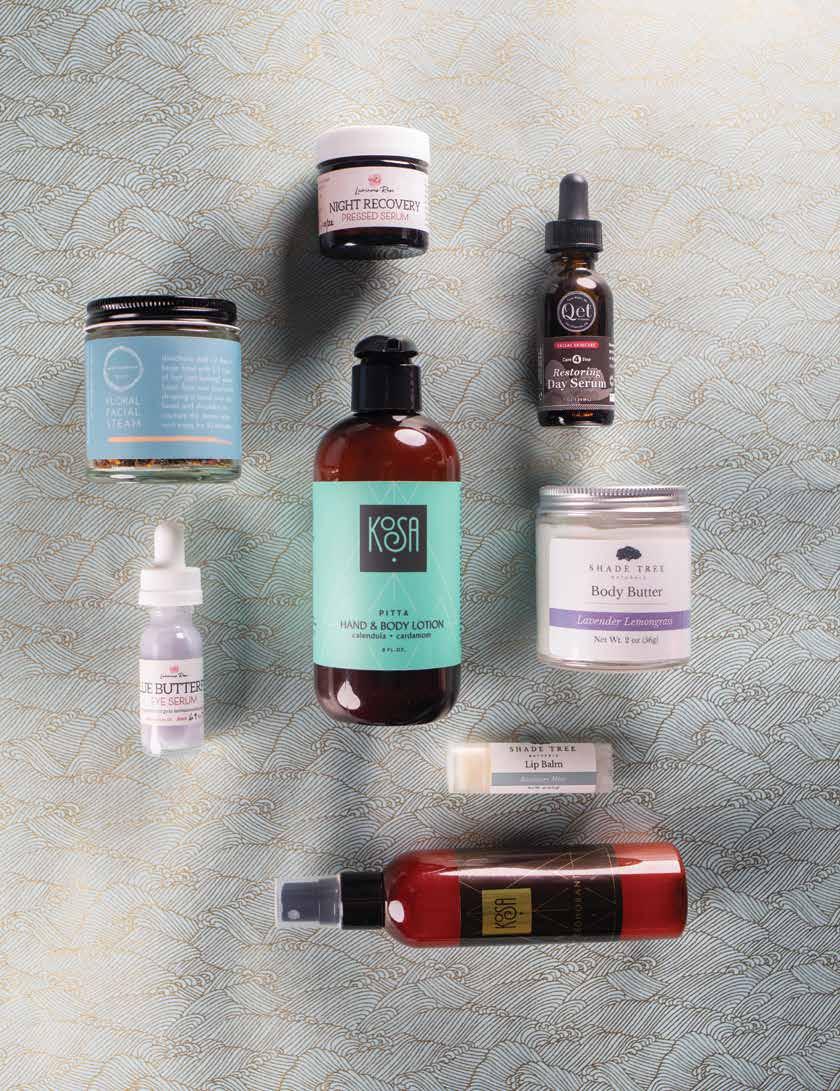
These local, ecofriendly skin and body care lines are all femalefounded — and delightful to try.
BY KATHERINE LAWLESS PHOTOGRAPHY BY SHANNA WOLF

Thinking green can extend to the skin and body products you use. Luckily, we have a wealth of local female entrepreneurs that offer skincare with clean, natural ingredients to help you feel relaxed and refreshed.
As a mother and doula, Tara Parish is well attuned to the needs of postpartum parents and babies. That’s why Shade Tree Natural products use ingredients that work for even her most sensitive clients, preferring to use locally-sourced beeswax and honey, and other fair-trade ingredients. Popular products like the Sleepy Baby Essential Oil Blend and Lavender Lemongrass Body Butter are formulated to be gentle and natural, perfect for soothing the skin of newborns and their caretakers. shadetreenaturals.com
For Lisa Brill of Qēt Botanicals, creating organic, natural skincare has been a personal journey. After her own difficulties with rosacea and acne, Brill wanted to share the skincare solutions she discovered with others, leading to a skincare line and business philosophy that champions confidence in the natural you as the new and improved beauty standard.
Qēt Botanicals Suite sets make it easy for those beginning to embrace
skincare to try several products in sample size. Choose from a variety of haircare, bodycare and skincare packages formulated with natural oils (carrot, raspberry, rose) that help hydrate, balance and restore the skin. qetbotanicals.com
Jasmine Banks (one of BRAVA’s 2021 Women to Watch!) is a local entrepreneur whose passion for wellness can be summed up in one of her signature sayings: “Self-care is a divine responsibility.”
After Banks’ mother passed away in 2012, she began to examine how the products she used on her skin every day could affect her health long-term. Banks then began sharing the results of her research through “Mine vs. Yours”-style Facebook posts to show her friends the natural alternatives she made for deodorants and body butters. Her posts drew quite a bit of positive attention, leading Banks to create Perfect Imperfections 608, a name that nods to her own philosophy on beauty and the close relationship she had with her late father. Products are handmade in small batches, packaged in reusable materials and are chock-full of soothing ingredients like coconut oil and goat’s milk. Her products, like the Lemon & Sage Whipped Body Butter and Floral Facial Steam, encourage users to take time for themselves through simple acts of self-care. perfectimperfections608.org
Founder and formulator Maria Henry studied at Formula Botanica and the School of Natural Skincare International to create her own COSMOs-certified skincare and haircare products (which means 95% of the plant compounds used are organic). Thus, her line is plant-based and free of synthetic ingredients. Henry, whose business is based just outside of Madison, also helps her clients make the best choices for their skin by listing and explaining each ingredient’s properties on her website.
“You can have an honest product [and] have products that work … and are good for you and the environment,” says Henry. The brand’s shampoo and conditioner bars (like blue tansy and bamboo) have a low carbon footprint, little packaging and offer a concentrated product for more bang for your buck. Henry’s personal favorite product is the Night Recovery Pressed Serum, made with ucuuba, peach kernel, kiwi and lupin seed oil to stimulate collagen in the skin and slow signs of aging. luminousrosebeauty.com
To KOSA Spa founder Shilpa Sankaran, wellness and beauty are “not about elimination, but rather about nourishing the good.” Sankaran created her KOSA Spa skincare line as a pandemic project in the hopes that the products would be an extension of her spa (which is located at Garver Feed Mill), for use at home. The products, which include skin, body and hair care, use ingredients such as baobob oil, aloe, rose and lavender. They’re formulated according to Ayurvedic sciences, a practice that involves balancing the skin’s need to be hydrated, soothed, warmed or revived. And, they provide a delicious aromatherapy spa experience, too.
“With aromatherapy, you’re working on your mind and body at the same time. When you take a shower, there’s a deliberate, intentional purpose behind those smells,” says Sankaran. kosaspa.com
Katherine Lawless is a former BRAVA Magazine intern, and writes about wellness, culture and art.



Staying active and embracing exercise can significantly improve your quality of life, say the experts at Stoughton Health’s OrthoTeam Clinic.
Not long ago, the concept of exercising for those over age 55 may have included a healthy walk around the neighborhood or inside a mall. While walking is an excellent way to stay active and healthy, today individuals 55 and over are expanding upon what it means to stay active in order to impact their long-term health goals.
Being Purpose-Driven
Staying active means different things to different people, but the key is to keep moving. As Jennifer Hamilton, a physician assistant at Stoughton Health’s OrthoTeam Clinic explains, exercise can be both mentally and physically rewarding at any age.
“The benefits of staying active include improved endurance, decreased joint stiffness, weight control, better balance and improved mood with the production of endorphins,” Hamilton says.
While exercising can improve a person’s emotional wellbeing, it also helps maintain a healthy weight, which plays a huge role in arthritis prevention of the knees and hips.
“Being sedentary can lead to weight gain and loss of joint mobility, both of which can increase pain in the joints,” says Renee Burke, a physician assistant at the Stoughton Health OrthoTeam Clinic.
In some cases, five pounds of weight loss can contribute to 20 to 25 pounds less pressure on the knee joints.
Steps to Take
Exercise does more than help you lose weight and get toned — it also creates an increased demand for oxygen, which conditions the cardiorespiratory system and is an excellent defense against high blood pressure, high cholesterol and heart disease.
So, what are some suggestions on how to stay active after age 55?
Hamilton says one of the best ways is the simplest: Walking. Walking in your neighborhood, at a park, on a treadmill or around the mall can be great for your heart health as well as easy on your joints.
“For mobility, consider yoga, chair yoga or modified yoga, which can be excellent for increasing flexibility and stretching, and reducing pain,” Hamilton says.
Another excellent low-impact activity is swimming or water aerobics. “This
activity really gets the heart pumping while being incredibly gentle on your weight-bearing joints,” Burke says.
Other ideal, low-impact exercise options include biking (stationary and outdoor), taking a Pilates class, dancing to your favorite music or taking a Zumba class.
When identifying your key exercise regimen, consider your personal goals for the activity level.
“If the goal is weight loss, then a comprehensive diet plan and exercise program focusing on exercise that elevates their heart rate is the first step,” Hamilton says. “If the [person’s] goal is strength, determining where to start can be key.”
Usually, strength-building starts with very low weights (under five pounds) and slowly adding more weight as tolerated. If your goal is to increase mobility and balance, yoga and physical therapy are excellent resources for gaining knowledge and confidence.
Stoughton Health offers a variety of exercise classes to help keep people over 55 active, including balance, StrongBodies, Parkinson’s, yoga and more. These classes and more can be found at stoughtonhealth.com.


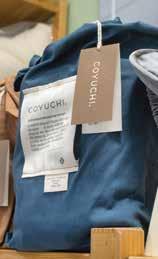



BY SHAYNA MACE PHOTOGRAPHY BY SHANNA WOLF
Buying items that are organic and eco-friendly feels good as a shopper but doing the research on the things we’re buying can be time-consuming. Satara Home and Baby has you covered by curating earth-friendly goods for baby and home, along with providing customers detailed information on why a particular product is ideal for the environment.
The store, which was founded in Madison in the mid-’90s, is known for carrying goods made with sustainable materials, such as cotton and bamboo bedding, latex mattresses, organic baby clothing, natural body care products and eco-friendly toys. Manager Dan Ely says supporting eco-conscious companies while giving customers high-quality, environmentallysound options is their mission. “No one else around has the thoughtful commitment we do [to carry] natural and sustainable [items] — and that’s a big deal to customers,” says Ely. “As a store, we’re unique.”
6333 University Ave., satarahome.com
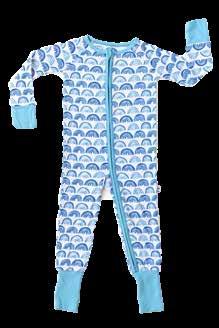



The thought of paying for college makes many parents shudder, and with good reason: The price of higher education has increased nearly every year for decades, consistently outpacing inflation. According to the College Board, in-state students at public colleges are paying an average of 30% more for tuition and 25% more for room and board than they did 10 years ago. The four-year total comes to about $91,000 for these students, $158,000 for out-of-state students at public colleges and $207,000 — roughly the median price of a Wisconsin home — for students at private colleges.
Fortunately, these numbers don’t tell the whole story. Knowledge and a plan can boost your financial confidence and make college more affordable, even if you have large debts or a modest income. Read on for local experts’ tips on college savings, scholarships, the financial aid process and more.
The Federal Application for Student Aid, or FAFSA, is the gateway to many scholarships and grants, as well as federal loans for students and parents. Even if you think your student won’t qualify for much, complete this form with them. Your family’s financial situation could change, and students from higher-income households are often eligible for some scholarships. Be sure to file this form annually — and budget plenty of time to complete it.
“Do it yearly and do it early,” says Autumn Sanchez, an academic advisor who manages the UW-Madison Badger Ready program, a transitional pathway for returning adult
With costs continuing to climb, it’s smart to plan ahead.
BY JESSICA STEINHOFF
transfer students. “You might discover sources of funding you wouldn’t have known about otherwise.”
Most colleges will use the FAFSA to create a personalized financial aid offer for your student. This letter details the scholarships, grants, work-study programs and loans your student can use to pay for their education. It also shows the cost of attendance, or COA, which is the average cost of one academic year. This number includes tuition and fees, room and board, books and supplies, transportation costs and certain personal expenses. By plugging different aid sources into the COA, you’ll see what this college will actually cost your family. Compare aid offers from different schools to determine which ones are most affordable.
“Even if your student doesn’t accept every source of aid in the offer, this [document] can inform your family’s financial decisions for the next academic year,” Sanchez adds.
Want to glimpse a school’s COA before the aid offer arrives? Many college websites have calculators to help you do just that.
“These tools go by a few different names. At UW-Madison, it’s called a net price calculator, and it can help you start planning before an admissions decision has been made,” Sanchez says.
A 529 plan is like a 401k retirement plan, except it’s to help you stockpile money for college. You can invest those funds tax-free, then use them later for a range of qualified educational expenses. Unlike 401k plans, 529 plans let you establish an account for each kid or grandkid and transfer money between their accounts.

The Reverie collection is mid-century modern and perfectly tailored with button-tufted seating and back. It offers a casual and comfortable seating experience for endless relaxing and lounging. Stop by our downtown or west side store to try it out!
RUBIN’S CONTEMPORARY FURNITURE
317 E. Wilson St., Madison 608.255.8998
670 S. Whitney Way, Madison 608.274.5575 rubinsfurniture.com


Spring 22 is alive with color, comfort and style! Whether it’s a piece in a floral print or solid, or crafted out of linen or gauze, all are right to look your best and feel your best.
Don’t forget a great hat! See you soon at McFee On Main in downtown Mount Horeb.

Spring is here! Visit Décor this spring and shop for your favorite home accents and gifts. Follow us on Facebook to see what’s new @decormadison!
DÉCOR FOR THE WELL-DRESSED HOME
3000 Cahill Main, Suite 215 Fitchburg, WI 53711 608.444.0571 decormadison.com


CIAO SPRING 2022!
Favorite fashion finds include fun and fabulous transitional styles from jeans and summer sweaters to dresses!
New spring totes, purses, jewelry, sunglasses and so much more!
400 E. Main St. Mount Horeb, WI 53572
mcfeeonmain.com

CIAO BELLA BOUTIQUE AND MORE
305 E. Main St. Waunakee, WI 53597 608.849.2426 ciaobellaboutiqueandmore.com
Bella Boutique AND MORE

Unique garden-themed items for the whole family. Open daily! Shop a completely refreshed look and feel, and browse a variety of brand-new products and items.
OLBRICH BOTANICAL GARDENS
3330 Atwood Ave.
Madison, WI 53704
608.246.4550
olbrich.org

Simply visit bravamagazine.com to sign up for a complimentary subscription — it’s that easy! BRAVA Magazine covers the issues Dane County-women care about, including health and wellness, money, career, style and profiles of notable women.

The price of higher education has increased nearly every year for decades, consistently outpacing inflation.
So, what’s a qualified educational expense? The definition is pretty broad, says Linda Lambert, financial capability director for the Wisconsin Department of Financial Institutions’ College Savings Program.
“It’s not just tuition and books. It’s also things like computers and living expenses,” she says. “Just remember, if you use these dollars for something other than college, you’ll be charged a 10% penalty.”
Wisconsin sponsors two 529 plans: Edvest, which consumers can access directly, and Tomorrow’s Scholar, which is offered through financial advisors. Both come with an array of investment options and Wisconsin tax incentives.
You have until April 18 of this year to make 529 plan contributions for the 2021 tax year. If you’re filing individually, you can deduct the first $1,690 you contributed to each of your children’s accounts in 2021. The number jumps to $3,380 if you’re married and filing jointly. Any contributions beyond these amounts can be carried forward to future tax years.
Edvest offers saving incentives throughout the year, too. On May 29 (check edvest.com for exact promotion dates), open an account with at least $50 and make a monthly deposit of $25 or more for the next six months, and Edvest will add an extra $50 to the account. Also visit the website to enter a free 25th anniversary sweepstakes through January 2023. The prize — $529, of course — is awarded monthly.
Lambert also recommends that parents explore the lesserknown benefits of 529 plans so they know their options when it comes time to spend the money. For example, a 529 plan can pay for college abroad if the institution accepts the FAFSA. It can also cover the costs of a trade school or apprenticeship.
“You can even use $10,000 from a 529 plan to pay down student loan debt, including your own,” she says.
bravamagazine.com
Jessica Steinhoff is a Madison-based freelance writer who enjoys writing about finance, the arts and family topics.

What is the trick to getting your kids to eat healthy? YOU! If you eat healthy and provide options for nutritious foods, your kids will be more likely to eat them. Here are some tips to foster healthy eating habits.
Keep trying. There are some foods that kids just don’t like — which is the same for adults! If a meal contains a food your kids don’t like, offer an alternative. For example, if your kids don’t like broccoli, consider offering green beans and broccoli. And, continue to offer healthy foods your kids may not have liked in the past. It can take up to 15 tries for a child to like a food, so keep trying.
Keep fruits and vegetables on hand and have them easily accessible during snack times. After school or while you’re cooking dinner, have a bowl of cut-up fruit and/or vegetables on the counter. Fruits and vegetables are great any time of the day, and can be eaten raw or cooked. Aim for three to four servings of fruits and vegetables every day.
Dena Person, RDN, CD and clinical dietitian for UnityPoint Health – Meriter, shares how we can set a healthy example for our kids.


Have meals together as a family as often as possible and try to eat at home more often than out.
Keep in mind what drinks are available. Soda and juice both contain too much sugar. Milk has nutrients that are good for kids’ development, so stick to milk and water. (Keep in mind milk alternatives, such as soy or almond milk, may not provide the same amount of protein or calcium.)
Flavored waters that have no calories but taste sweet will contain artificial sweeteners. These, as well as diet drinks, should be kept to a minimum. Get kids in the habit of drinking water.
Make mealtime fun. Don’t stress, and try not to make a completely different meal for your child than what you’re eating. Having kids help plan and prepare meals for the week can also motivate them to try and enjoy the food that is being served. Having breakfast for dinner is one way to keep dinnertime fun! Another idea is having fun sauces to dip vegetables in. The best ingredient for dips is plain, Greek yogurt. Add
fruit to the yogurt for a sweet dip to pair with fruits. (Adding fruit to yogurt also makes a tasty smoothie!) Try adding ranch dressing mix, pesto, salsa or curry to the yogurt for different flavors. Hummus is also a flavorful, high-protein dip. Finally, don’t make dessert a reward, make it part of the meal. Dessert doesn’t have to be a daily indulgence, and it should never be the reward for overeating. Everyone has days when they are hungry and days when they are not — children do as well. A 2017 study concluded that participants who ate dessert first before their meal maintained their weight. The participants who ate dessert last tended to overeat and experienced weight gain.
Ultimately, you know your children best. I have two children who eat very differently, so I choose different eating strategies for each one. Keep modeling good dietary behaviors and setting the example for having a healthy relationship with food, and you and your children will reap the benefits for many years to come.
Explaining the pros and cons of plantbased, meatless “meats.”
BY EMMY
BAWDEN
Plant-based, meatless “meat” products have exploded in popularity in recent years. With so many options available, it’s confusing to even know where to start. Here’s what you need to know.
Designed to taste, feel and even look like real meat, meatless products are meat alternatives that replace animal protein with a plant-based source. However, not all meatless meats are created equal.
For starters, they use different plant proteins. Some use pea, fava and mung bean. A brown rice protein mix is in Beyond Meat burgers, and a potato and soy protein mix is used in the Impossible Burger. Some products, like those from Morningstar and Boca, still add some animal proteins like egg whites and cheese. Most meatless meats use coconut oil as the primary fat as it gives a good texture and sizzle while cooking, but it’s not uncommon to also see sunflower or canola oil in the mix. Beyond Meat also adds coconut butter for even more meatlike texture.
Speaking of meat-like, some products use ingredients like beet juice to give the illusion of meat taste and a sometimes “bloody” appearance. Other flavoring agents used include salt, fruit juice and extracts, vinegar and sugar.
Plant fiber such as methylcellulose is a common ingredient, and though some may consider these cheap ingredients with no nutritional value (commonly referred to as “fillers”), they actually bind ingredients together and add satiety-boosting texture and fiber. Natural emulsifiers such as sunflower lecithin are also used to allow oil and other ingredients to combine (just like the role egg yolks or mustard play in salad dressings). While ingredients with names like pyridoxine hydrochloride and cyanocobalamin may seem scary, they’re the actual names of vitamins B6 and B12, as many of these products are fortified with vitamins and minerals. Beyond Meat and Impossible Burgers both have at least 100% and 20% respectively of your daily vitamin B12 and iron needs — two nutrients that are often deficient in plant-based diets.
Jackfruit, another meatless option, has recently grown in popularity. Brands like Upton’s Naturals are selling this fruit from India and Asia as a meat-alternative with a stringy, fibrous texture perfect for favorites like BBQ sandwiches. While many
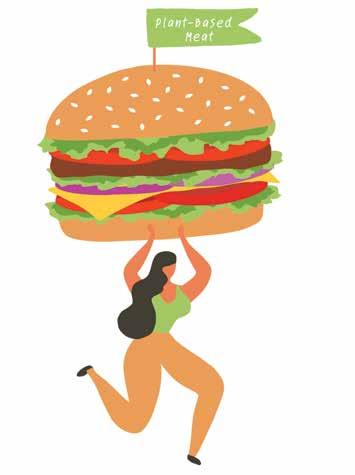
jackfruit products have the advantage of simple ingredient lists and shelf stability, they only have 7% of the protein and 15% of the iron that Beyond Burgers offers.
My top pick as a dietitian is Lightlife Smart Ground PlantBased Crumbles. They are incredibly convenient to throw in tacos and salads, and significantly lower in saturated fat and sodium than other products (less than 1 gram and 260 milligrams, respectively, per four ounces). Lifelight’s parent company, Greenleaf Foods, is also 100% carbon neutral.
Overwhelmed by options? Here are some guidelines:
• Opt for a product with about 20 grams of protein and greater than 20% of your daily iron and vitamin B12.
• On a low-sodium diet? Choose those with less than 300 milligrams sodium per serving.
• Looking to increase your fiber? Choose those with more than 3 grams per serving.
• Watching saturated fat? Avoid products with coconut oil listed as the first fat ingredient.
In 2015, the World Health Organization concluded red meat is probably carcinogenic and processed meats, such as bacon, certain deli meats and hot dogs, are carcinogenic to humans. Knowing this association with cancer, particularly colorectal,





Livestock accounts for 14.5% of global greenhouse gas (GHG) emissions (with the largest impact from cows), which significantly contribute to climate change through deforestation, pollution and resource wastage. While there are ways to eat meat more sustainably, the footprint of meatless products is significantly smaller. Experts estimate they use up to 99% less water and land and produce anywhere between 34-93% less GHG emissions. However, experts still agree that there is more to understand about the overall carbon footprint of the meatless meat industry, as agriculture is only one piece of the puzzle.
swapping in plant-based meats might seem like a no-brainer!
While replacing meat with plant-based proteins like beans and whole grains can reduce cancer risk, it’s unclear whether these highly processed products have the same benefit. One of the ingredients in question is heme iron, which Impossible Burgers uses for meaty taste and texture. Heme iron is found only in animals, but in this case, DNA from soybean plant roots is inserted into genetically engineered yeast, which is fermented to produce heme (aka soy leghemoglobin). Here’s the controversy: Meat-based heme iron is one of the proposed links to cancer, which raises questions about soy leghemoglobin because it has not been well-studied so the long-term effects of frequent consumption are therefore unknown.
Looking at the nutrition facts, while meatless meats have significantly more sodium than animal meat, they have zero cholesterol and offer more fiber. However, meatless products have more fat than lean meats like chicken breast and 90/10 beef. Although meatless products are a great entryway into plant-based eating, they’re still highly processed, and should be treated like red meat and enjoyed in moderation (less than 12-18 ounces per week).
Emmy Bawden, MS, RDN, CD and LDN, is a registered dietitian nutritionist and owner of the Madison-based nutrition therapy practice Real Good Nutrition.

April
is Alcohol Awareness Month, a time that promotes awareness and understanding of alcohol use disorder and alcohol-related issues.
BY HANNAH WENTE
Alcohol is pervasive, especially in the Midwest. It’s sold at gas stations and consumed at family gatherings, sporting events and during meetups with friends. When consumed in moderation, it can add a celebratory tone to an occasion or enhance a meal.
But many people choose to abstain from alcohol for religious, personal or health reasons. Included in that group are those grappling with alcohol use disorder (AUD)*, a chronic disease characterized by uncontrolled drinking and a preoccupation with alcohol, according to the Mayo Clinic.
Alcohol numbs the senses. Tolerance to it builds over time, meaning some don’t seek help for AUD until they encounter issues with family, work or even the justice system. The road to sobriety or moderation can be a long, arduous path for those with AUD. But, it’s well worth it for them.
Stephanie (who asked her last name not be used) was in her early twenties when she got her first Operating While Intoxicated (OWI) violation. After two subsequent violations, she was court-mandated to join the Dane County OWI Treatment Court program. Without it, she doesn’t know if she would be sober today.
“I still don’t know there was ever a point where I felt like I needed [alcohol],” she says. “It was more of a want.”
Stephanie didn’t drink in high school but started while she was attending Madison College. The volleyball and softball leagues she participated in post-college were hosted at bars and centered on drinking with her teammates: a drink before the game, during the game and after the game.
“It’s just always there and you’re looked at as the weirdo if you’re not drinking,” she says.
According to the Substance Abuse and

Mental Health Services Administration, alcohol is the most frequently abused substance in the U.S. Approximately 95,000 deaths are attributable to excessive alcohol use each year in the U.S., according to the Centers for Disease Control (CDC).
I still don’t know there was ever a point where I felt like I needed [alcohol]. It was more of a want.
Dietary guidelines for Americans recommend that if they drink, that women have no more than one drink per day, and for men, no more than two drinks per day. This is because women produce lower amounts of alcohol dehydrogenase (ADH), a chemical that helps metabolize alcohol. Women also
*Alcohol use disorder, along with alcohol dependence or alcohol addiction, are the preferred terms for this illness. “Alcoholism” is considered a colloquial term, according to the National Institutes of Health.
have a higher ratio of body fat, which holds alcohol. Both of these mean women get drunker faster. They’re also more at risk for alcohol-induced diseases like pancreatitis, and urinary, cervical and breast cancers. Women are also more likely to face trauma from date rape and sexual assault when alcohol is involved — and this trauma can resurface during recovery.
Stephanie’s dad struggled with alcohol use disorder. By the time she was in her 20s, she was helping her dad out quite a bit running errands and caregiving for him — and drinking to cope with the stress. She felt it was hypocritical to talk to him about moderating his alcohol intake.
“He was an alcoholic,” she says. “He was at the point where he needed it to cope with what he had made of his life. Every day he needed me to get something for him. I felt like I didn’t really have a life.”
It’s often these challenges that cause us to drink, says Journey Mental Health President, CEO and long-time counselor Tanya Lettman-Shue. Women are sometimes closet drinkers, she says, making it harder for family and friends to recognize the signs of alcohol addiction.
“Women tend to hide their drinking [if they have a problem],” Lettman-Shue says. “If they’re holding down a household and a full-time job, they are more likely to be closet drinkers.”
Stephanie didn’t want to burden other family members or friends with the stress she was under, helping her dad out.
“I was self-medicating,” she says. “I would sit at home and drink, and think, ‘It doesn’t matter because I’m not going anywhere.’ You need more [alcohol] to get to the point to where you want to be.”
Lettman-Shue notes that indeed, many people will gradually increase their alcohol consumption, while simultaneously surrounding themselves with people who reinforce the habit.
“No one ever wakes up and says, ‘I’m going to grow up to be an addict,’” she says. “Your life becomes narrower and narrower over time. Your use of the substance becomes more normative. [Alcohol addiction] isn’t [sudden] — it happens over time.”
While Stephanie did recognize her increased alcohol consumption, it was her third OWI that really prompted her to take action: “That was the linchpin of, ‘I have to change what I am doing.’”
In Wisconsin, people who have three or more OWIs are placed on probation and undergo an assessment to determine if they need to enter the OWI Treatment Court program. It involves having an interlock installed on your steering wheel, blowing into a Soberlink device four times a day (including at 7 a.m. and 10 p.m.), calling into a hotline and random urine testing. Stephanie started her sobriety journey right before the pandemic lockdown — a time which she says helped her process everything she had kept bottled inside.

“There were a lot of nights I would be crying and being






super emotional,” she says. “I would think, ‘Why did I do the things that led me here?’”
Lettman-Shue says wake-up calls — an OWI, a family member saying one’s behavior is no longer acceptable or blacking out — are tipping points for most people. But, no one has to wait to get to that place. She recommends that anyone concerned about themselves or a loved one should ask about the person’s quality of life, work and relationships. Are they having the quality in their life they once did? Are they relying on the substance? Are they using it as a tool to cope?
“Whether it’s drugs or alcohol, sex or food, we have to be thinking about the quality of our relationship to a coping mechanism and if it’s healthy,” Lettman-Shue says. “Most people haven’t been taught those coping skills.”

Whether it’s drugs or alcohol, sex or food, we have to be thinking about the quality of our relationship to a coping mechanism and if it’s healthy.
She also says it’s critical to teach young children and adults how to recognize their thoughts, feelings and emotions, and process them in a healthy way. For those with AUD, sobriety involves learning about what tools can positively help with feelings and setbacks. As with other lifestyle changes like diet and exercise,
sobriety takes conscious, continuous effort, on a daily basis.
Stephanie’s mom and sister have been her biggest supporters — her mom has told her repeatedly, “I am here for you regardless of everything you’ve done.”
Her graduation from her OWI program was February 11, 2022, and she has been sober since February 2020. Today, Stephanie’s mother says, “I feel like I got my daughter back.”
Stephanie still gets asked if she’d like a drink. But more and more, she is finding that people honor her commitment and bravery. She hopes that her experience can serve as a model for others.
“You’re not alone,” she says. “You’re not an exception — there are a ton of other people in your shoes. You need to take a look at the path that you’re heading down.”
For a mental health emergency, call Journey Mental Health at 608-280-2600. To schedule an initial visit about alcohol use disorder or other mental health issues, call 608-280-2720. journeymhc.org
Hannah Wente is a freelance writer who builds community through her writing and nonprofit work.





For over a century, we have worked side by side with our clients to navigate the complex legal issues affecting their lives. We invite you to get to know Boardman Clark. Together, we can chart the best path forward.


Skin is the largest organ in our bodies and plays a crucial role in shielding us from constant environmental insults, which can lead to irritation, inflammation and even systemic disease. The outermost layer of skin forms a barrier that keeps the bad things out and the good things in, so taking care of our skin is an important way to promote overall health and wellness. However, because skin issues can both arise from external influences, as well as represent disease states within the body, seeking a thorough medical approach to the diagnosis and treatment of skin disorders and their related disease states is a necessary first step.
At The Rawal Institute for Hair Restoration and Aesthetic Medicine, Shamila Gupta Rawal, MD, evaluates your skin concerns in the context of a comprehensive medical history and physical examination, to target the real cause of your skincare issue and give you the best result possible.
WHAT ARE SOME FACTORS THAT CAN LEAD TO SKIN BARRIER BREAKDOWN?
The skin barrier can be compromised by a combination of both external and internal factors. Harsh skincare ingredients can strip the skin of moisture and impair the water-tight bonds present between skin cells. Fragrances and allergens in skincare and makeup are common irritants, and alterations in the pH or chemistry of the skin can lead to an increase in yeast and bacteria counts on the skin. Internal disease states that can compromise the body’s ability to maintain an intact skin barrier include diabetes, peripheral vascular disease, autoimmune and inflammatory disorders, hormonal imbalance, smoking and dehydration, among others.
WHAT ARE SOME SIGNS/SYMPTOMS THAT THE SKIN BARRIER HAS BEEN COMPROMISED?
When the skin barrier has been compromised, toxins, bacteria, allergens, and the like can enter the body and incite an inflammatory response, presenting as redness, swelling, bumpy texture and fine lines, sensitivity, itching/burning, hives and breakouts. Dryness results from the increased moisture loss through this leaky skin. Conditions such as acne, rosacea, eczema, melasma and others can flare up and sometimes lead to scarring or discoloration.
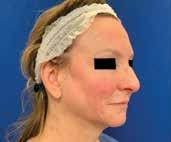

WHAT ARE SOME OF THE APPROACHES USED TO IMPROVE THE SKIN BARRIER?
The most important goal of my medical approach to skin issues is to reduce overall external and internal inflammation and restore the skin barrier. By reviewing a patient’s personal and family medical histories, I can identify the root causes for their skin concerns and provide a robust medical and procedural treatment strategy that will treat the concern now and prevent it
“I identify the root causes for their skin concerns and provide a robust medical and procedural treatment strategy that will treat the concern now and prevent it from flaring in the future.

DR. SHAMILA RAWAL
from flaring in the future. The best results are additionally obtained through engaging my patient in an ongoing partnership with a commitment to daily sunscreen use and the practice of healthy lifestyle habits.
WHAT DO THE PICTURES SHOW?
This beautiful patient with rosacea had inflammation of her skin, showing as redness, thickened and rough texture, dryness and sensitivity. I performed a series of laser and radiofrequency skin resurfacing treatments to help shrink dilated blood vessels, break down scar tissue and promote new, healthy collagen production. I restored her skin barrier with my medical-grade skincare, tR(x)I, and she was prescribed metronidazole gel to address her rosacea internally. Her results are shown several months after completion of her three-treatment series, and she is ecstatic with the smoothness, calmness and increased radiance of her skin.
Troubled by skin issues? Contact our office to schedule your comprehensive medical evaluation now.
Finding used, stylish items for your home is easy at area secondhand and thrift shops.
BY SHAYNA MACE | PHOTOGRAPHY BY HILLARY SCHAVE

Shopping secondhand is not only earth-friendly, but you can find beautiful, one-of-a-kind home items — many times for a steal. Check out these area secondhand shops for inspiration.
Owned by a mother-daughter team, this standout consignment shop has gently-used furniture and home décor. They also offer home staging services — so they know their stuff when it comes to design. The showroom is arranged in attractive vignettes with unique, one-of-a-kind pieces. Pick up a splashy Marimekko tray, a midcentury modern sofa or unique lighting. thecozyhomemadison.com
With three area locations (plus an additional one in Janesville), this affordable thrift shop has home goods for a steal. The Stoughton Road store only sells furnishings and home items, so stop here if you want a wider selection (the other locations also sell clothing). agrace.org/thriftstore
Like many thrift shops, this one also benefits a good cause — Dane County’s furry friends. Find home goods, men’s and women’s clothing, and of course, pet supplies. giveshelter.org/our-services/ thrift-store



A thrift store standby, Goodwill has several Madison-area locations plus outposts in the suburbs as well. We love their mission of providing employment and opportunities to differently-abled people and those with life challenges. goodwillscwi.org

Thrift store, consignment and boutique pet shop in one, Rescue Me is an animallover’s dream come true because all of the shop’s proceeds benefit the Underdog Pet Rescue. And, the store’s shop-withina-shop, MyDinkyDog Pet Boutique, has brand-new designer pet products for your favorite pet. If you want pieces for your own closet, find department store and designer clothing and accessories for sale, along with children’s and home items. rescuemeboutique.com
Find furnishings, lighting, décor pieces and art at this Middleton shop (they also sell clothing). Items are accepted on a consignment basis. simplysavvyconsign.com
What’s fun about “St. Vinny’s” is their themed sales — staff gather up items such as LEGOs, designer goods and vintage kitchen items for special events that make thrifting a thrill. Shop seven Madison and surrounding area locations. svdpmadison.com
This northside store has housewares, clothing, jewelry and gently-used furniture. The shop’s proceeds benefit Door Creek Church Ministry as well as other local organizations on Madison’s north side. boomerangsresale.org
Owned by Coni Marotz, this huge shop sells new furnishings and home goods plus reclaimed and consignment home items, too. Marotz’s polished design aesthetic can help you create a truly one-of-a-kind space. iconiinteriors.com

BY ANNIE ROSEMURGY
You’ve probably seen commercials for refrigerators that allow you to check the fridge’s contents when you’re not at home, or have heard of (or have) an appliance you can control via an app on your smartphone. And at its most basic, that’s what a smart appliance is — an appliance that is built to allow connectivity with a smartphone.
“Some customers come into the store saying they don’t want anything to do with WiFi, apps or other techie features,” says Joshua Reno of Brothers Main Appliance. “They come in with a notion that smart appliances are more confusing to operate or more susceptible to having something break.”
However, it’s worth it to explore how “smart” appliances have become, because tasks at home (cooking, cleaning) can become even easier.
The oldest feature of these appliances remains one of their most important — the ability to self-diagnose a problem. When a smart device malfunctions,
an error code is generated in the appliance’s main computer. In theory, this information allows the repair technician to have a good idea what the issue is before they even lay eyes on the machine. Instead of showing up for the appointment not knowing what’s wrong, the technician can instead order and bring appropriate replacement parts to the initial appointment, saving the customer precious time and money. Smart appliances can turn the headache of repair and maintenance appointments into a breeze.
More recent technological advancements in smart appliances are less focused on fixing broken systems and more on bringing a high level of convenience to consumers. Modern refrigerators and freezers are programmed to issue notifications to an app on your phone when temperature thresholds have been exceeded.
“Imagine being on vacation and











receiving an alert on your phone that your freezer has lost power. You could potentially call a neighbor and have them come and rescue those frozen steaks you’ve been saving,” says Reno.
Ovens now come with built-in temperature probes, bringing down the stress of throwing a dinner party.
“With modern smart ovens it’s ‘set it and forget it,’” says Mary Kay Richards of Nonn’s Kitchen Bath & Flooring. “You put the roast in the oven, pre-program your phone to tell you once the internal temperature has been reached, and you can stay on the deck with your guests enjoying a glass of wine until dinner is done.”

Smart appliances are also a boon for busy families.
“If I leave work at five, I can preheat my oven before leaving the office, and it’s ready to go the minute I walk in the door,” says Richards. Smart washers and dryers will send alerts if items have been left in the basin for too long and will even adjust dryer cycles to modulate temperatures based on soil level and delicacy of fabrics.
These days, the sky is the limit for how elaborate the interfaces on smart appliances can be. Reno gives the example of a recent-model Samsung refrigerator that not only keeps perishables chilled but serves as a central hub for organizing and entertaining in the kitchen. Features such as an embedded television, white board that transmits a grocery list to your smartphone and a premier sound system are just some of the techie features that particular fridge has. The most recent generation of smart appliances are sleek, high style and multifunctional masterpieces.

Some consumers are wary of smart appliances because of a misconception that this technology comes at a cost. Not so, says Reno of Brothers Main. In fact, more than 50% of his showroom inventory is WiFi compatible and he estimates that this number will grow rapidly.
As smart appliances gradually become the standard in the market, more brands are building connectivity into their basic models. And, manufacturers have prioritized ease of use and intuitive operations.
“Most people quickly realize the advantages that smart appliances have for their lifestyles. [And] if you can use the appliance and you can use your smartphone, you can use a smart appliance,” says Richards.
Annie Rosemurgy is a Madison-based writer, mom of two active kids and sunshine-loving endurance sports enthusiast who never turns down an adventure.




Saving money is important, but it’s not the only aspect of financial wellbeing. Health and self-sufficiency are also important. Sitting down with a financial advisor who looked at the holistic picture helped Sarah Dunn, vice president of CG Schmidt, Inc., gain confidence in her financial decisions.
Joanna Burish’s strategy is to figure out what’s most important to her clients and work backwards to identify risks that threaten that lifestyle. That idea — and the help of a fellow woman — fundamentally altered Dunn’s financial outlook, allowing her to create a path all the way to retirement, and beyond. Burish asked Dunn about how their financial planning conversations have helped her.
What is your biggest strength, and how do you think that propelled you to where you are today?
Finding a job where I can capitalize on my strengths. I’m a firm believer in focusing on people’s strengths rather than their weaknesses, because people excel much faster when they’re doing things that come naturally to them. My dad taught us to think outside the box in how you approach things, and he would make you figure something out yourself.
That’s something I’ve brought with me into my professional and financial life as well.
Who did you learn most from when it comes to your own financial planning?
That would be you. The thing you’ve instilled in me is, it’s not just saving or investing your money. It’s really looking at a holistic approach and planning for the future, which can include owning a home, being faced with a disability, looking into long-term care and life insurance. I‘ve worked with other financial planners, and they don’t take that overall, comprehensive approach.
It’s really how you have developed your practice and one of the things that’s helped me the most.
How have you seen that play out in your life?
I took a vacation to Costa Rica, and I shattered my leg on a jet ski. After that happened, you and I had a conversation about disability insurance being more than a policy you have through your employer. It was really eye-opening because I have it through my employer, but it was really taking it a step further.
If I decide I want to retire, I can retire right now. There’s a lot of comfort in knowing I don’t have to worry about my financial future.
”
Does that translate into your professional life?
Yes, in that I’m well prepared for retirement, and my kids won’t be responsible for supporting me. That’s a personal goal: I don’t want my kids to feel like they’re going to have to take care of me financially.
Also, taking into account all my assets. You’ve helped me keep traveling down that right path to achieve my personal and professional goals, from owning a home to vacations that I want to take to helping my daughter buy a house. It’s helped me spend my money wisely, but also on the things that truly have value to me, too.
If you could go back to your 20-year-old self, what advice would you give her?
Embrace the challenging roles and opportunities that push you out of your comfort zone. Always take care of yourself. When I set out to get married, I didn’t think I’d get divorced, and I did. You have to rely on yourself.
How has holistic financial planning changed your strategic outlook?
If something were to happen to me, I know that I am covered. I’ve identified every risk and every threat, thanks to you. I know no matter what happens, if I were to become disabled, pass away — my kids are taken care of. If I decide I want to retire, I can retire right now.
There’s a lot of comfort in knowing I don’t have to worry about my financial future.
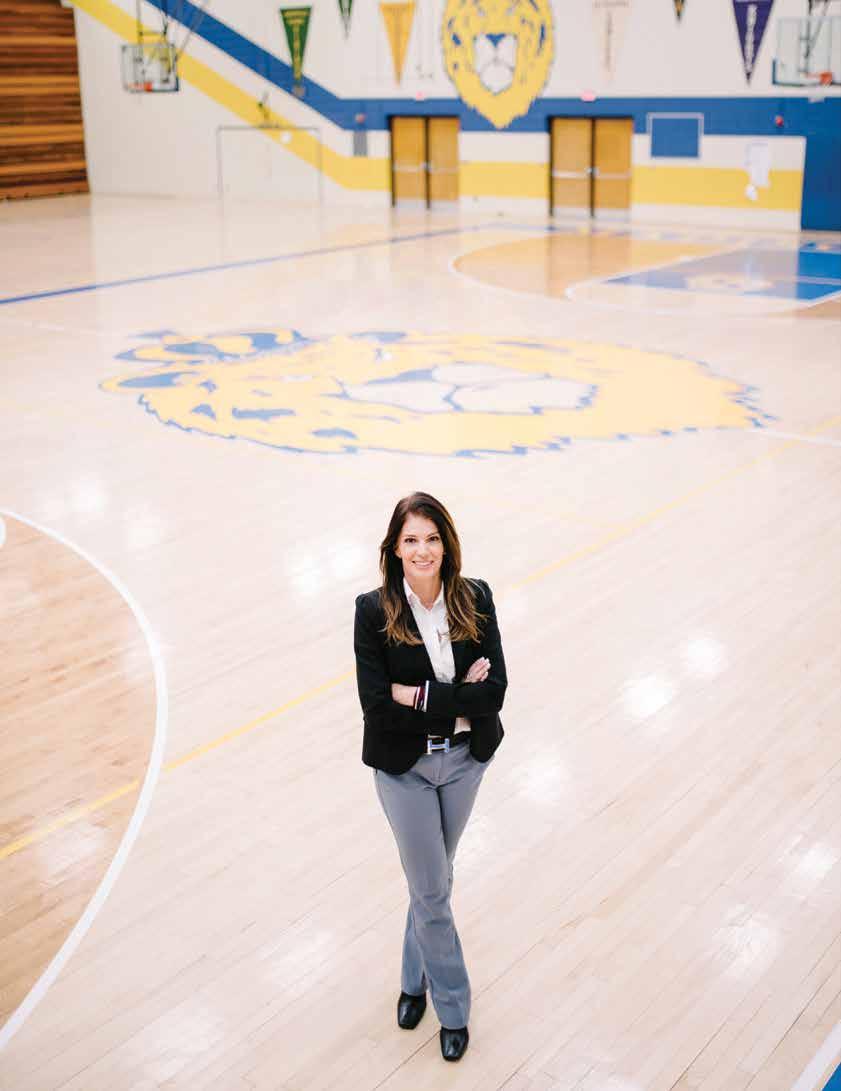
These local organizations and women are raising up the next generation of athletes, creatives, thinkers and leaders.
BY
Alicia Pelton has been an athlete all her life. Her experiences in high school track and basketball, running track at UW-Madison and playing professional basketball in Sweden for a year opened her eyes to the importance of leadership for girls in youth sports and beyond. In 2014, she started the Athletic Leadership Alliance, where she would give talks throughout the state; work with coaches and players on empowering athletes and helping them build courage, confidence and character; and did “behind the scenes” work on raising up female athletes and coaches.
Through all of this, Pelton has always emphasized the positive effects of girls’ participation and leadership in sports. Now, as the athletic director at Madison West High School since 2019, she has been working to bring equity to high school athletics by actively working to diversify the coaching pool, and educating coaches on how to coach girls’ teams.
Pelton is also a mother, and has raised her 17-year-old daughter to be able to use her voice and be an advocate within her sport. Pelton says that the key to raising strong, independent daughters is simple — listen to them, advocate for them and stand beside them when they make mistakes.
“I think that the biggest thing is listening to girls and helping them advocate,” says Pelton. “I have a daughter who’s 17 who speaks up. I give her that ability to say something and I have her back, and she knows I’m always gonna love her.”
While raising an empowered daughter, Pelton emphasizes the importance of letting them make mistakes, and teaching them how to learn from those mistakes in the future.
Alicia Pelton shares her key takeaways of working in the field of girl’s and women’s athletics.
“Sometimes we don’t understand that when we teach young girls [to use their voice], they don’t always get it right,” Pelton says. “My daughter doesn’t always get it right, but I’m so proud of her for being able to have a voice. I think the biggest thing is just making sure that you support and love them and give them that opportunity to speak.”
— Mason Braasch
Girls
“The big difference … is that boys like to play [sports] to feel good, [whereas] girls need to feel good to play sports, which means they need to feel good physically, mentally, socially and emotionally to play well. Boys tend to play when they’re not in a good situation — so they play to feel better.”
“Parents should go and play with girls — basketball, soccer, whatever it is — and include them in that. Playing with your kids in the same way is important.”
“When you see something that’s not equitable, whether it’s in a youth sport or game time, acknowledge it and talk about it, because kids notice. They’re aware, especially girls, and it starts to weigh on them over time. If girls feel they’re not valued and don’t feel good, they just don’t want to participate [in sports]. It’s important to acknowledge when there’s an inequity, and how that makes someone feel.”

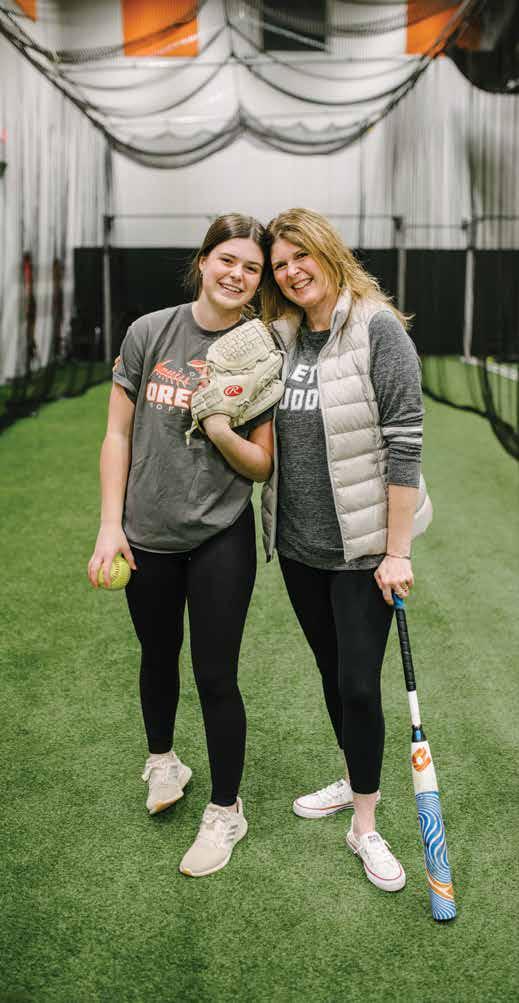
You can easily spot Amy Crowe on the sidelines at her daughter’s games: she’s behind the camera, donning a hat with the words “Do Epic Shit.”
From the ice rink to the basketball court and softball field, the journey of recreational sports through high school athletics with her daughter Emily threw a sharp learning curve at Crowe, who never participated in youth sports herself.
“I didn’t know what to say to my daughter, and everything I said sounded like a cliché,” says Crowe of her response to disappointments like a missed hit or a lost game. “I wanted to raise her so that she had a healthy body, a strong mind and a fun-loving spirit.”
She needed a playbook with a game plan, so she created Sports Mom Mantra, a blog and Instagram account with positive messaging, tips and ideas for navigating the youth sports culture, with a book set to publish in 2022.
“I would capture these moments of [the girls] just being full of confidence and, frankly, being badass. On the court. On the field. And I wanted them to remember that moment.”
Crowe posted her photos with inspirational messages on Instagram, and quickly realized the positive impact when Emily’s teammates shared their gratitude for what she was doing. Knowing she was making a difference was exactly the validation needed to continue growing Sports Mom Mantra.
“We see our kids’ body language and we know that they’re in their heads, so if I can help another mom get her daughter out of her head and help her realize that she is enough, that’s why I wanted to do this.”
Crowe provides tools and resources for raising strong women, whether on the field or in the game of life. She can’t solve every problem her daughter faces — she doesn’t even want that — but she can support a mindset shift.
“[As moms], we get confidence coaching, business resources and self-help
books. We listen to Brené Brown and Oprah and whoever else and we take these things and we self-improve ourselves, so why can’t we teach that to our daughters?” asks Crowe. “Why do they have to figure it out when they’re 20, 30, 40 [years old] and they’re dealing with stuff? Why not start it early so that they’re seeking out the resources and they can find things that will help them improve their own mental health?”
—
Candice Wagener
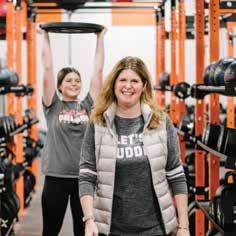
Amy Crowe recommends writing these on your daughter’s mirror with a dry-erase marker:
• I believe in you
• I have confidence in you
• Go have fun
• Don’t worry about the outcome
In the heat of the moment after a tough loss or a missed shot, these are some of Crowe’s favorite ways to reframe the situation:
• It’s the joy of the journey and what you learn versus what you didn’t get to experience.
• It’s OK to be sad that you didn’t reach a dream but it has nothing to do with your self worth; your self worth is not in the field/court/rink/pool.
• You are not defined by what you do out there; you are so much more.

For Lilada Gee, empowerment and courage go hand in hand. Sometimes, the best way to make people listen is to make them uncomfortable. Plus, there’s strength in being unapologetic, a fact she emphasizes in the lead-in to her “Defending Black Girlhood” podcast.
“One of the most important things we can do is allow Black girls the space to have a voice and a sense of agency, to speak about their experiences and have people listen and trust what they are saying,” says Gee, a Madison native who is an author, speaker, advocate and artist.
That’s why Gee launched “Defending Black Girlhood” in April 2020. The stories of Black girls and women are seldom told in the mainstream media, and when they are, someone else tends to be the storyteller. Her podcast, which numbers 50 episodes currently, puts Black girls and women in the spotlight and the driver’s seat, helping them tell their stories on their own terms. It also
gives them a platform for reaching a larger audience, and a way to inform listeners while moving them to action.
The episodes’ titles often ask provocative questions like “Does Madison Love Black Girls?” and “Can Black Girls Be Successful in School?”
Gee digs for answers by interviewing guests like local Black women running for elected office and abuse survivors seeking social change. The first season examines the murder of Erika Hill, a Black teen from Fitchburg who disappeared in 2007. Gee explores who was culpable, what was overlooked and how Hill might have been saved. She also asks listeners if they will remember this young girl, pushing them to consider their own role in the systems that failed her.
Gee is especially concerned about Black girls’ wellbeing in schools and within social services, two institutions that failed to protect Hill. She says schools are often too quick to remove
Black girls, which makes them vulnerable to violence and exploitation. She also worries that Child Protective Services remove too many Black girls from their homes when abuse or neglect is suspected, when other options might be considered. For example, if a parent has an undiagnosed mental illness, treatment could turn the tide for the family dynamic.
“Black children [are] being removed from their homes and placed in white homes through foster care and adoption,” Gee explains. “I’ve heard the stories of many adult Black women who’ve gone through this. It’s a trauma, and the wounds are deep.”
Gee says finding rarely told stories like these and “shining light into the darkness” is crucial, not only for the trauma survivors telling the stories but for those who haven’t found their voice yet. She sources many of these stories through her own network of friends, neighbors and colleagues.
At the same time, Gee challenges Madison to turn the mirror on itself.
One tool she uses for this is her art. She created multiple State Street murals in 2020, during protests about George Floyd’s murder.
“Black girls don’t often see themselves in the art that’s in schools, libraries and doctors’ offices, and there is something being communicated without it being said: ‘You are not beautiful, important or necessary.’ I need Black girls to know that they are seen and celebrated and beautiful — that they matter,” Gee says.
Another part of the process is ensuring
that Black girls participate in the full range of opportunities offered in the community, especially in school.
“We need to ask how we can help diversify debate, theater [productions] and other places at school where Black girls can create, and where they can truly be seen and heard,” Gee says. “If you have all of these activities but don’t have Black girls there, something is wrong.”
Gee’s podcast can be found in the Apple Podcast, Spotify or Patreon apps. — Jessica Steinhoff

Yes, Mozart was his inspiration, but Haydn was Beethoven’s teacher. Concertmaster Naha Greenholtz performs the Violin Concerto in G major. A great work from the height of Beethoven’s composing career, the monumental Missa Solemnis is one of his supreme achievements and one of the most significant Latin Mass settings ever penned.
John DeMain , Conductor
Naha Greenholtz , Violin
Madison Symphony Chorus , Beverly Taylor, Director
Sara Duchovnay , Soprano
Briana Hunter , Mezzo-soprano
Clay Hilley , Tenor
Kenneth Kellogg , Bass
Haydn , Violin Concerto in G major Beethoven , Missa solemnis
EXCLUSIVE SPONSOR
Rosemarie Blancke, in loving memory of Fred Blancke


21
APR 8, 9 & 10 FRI 7:30 PM SAT 8:00 PM SUN 2:30 PM
“Greenholtz’s tone matched perfectly with the orchestra. It was pure magic.” – Matt Ambrosio, The Cap Times




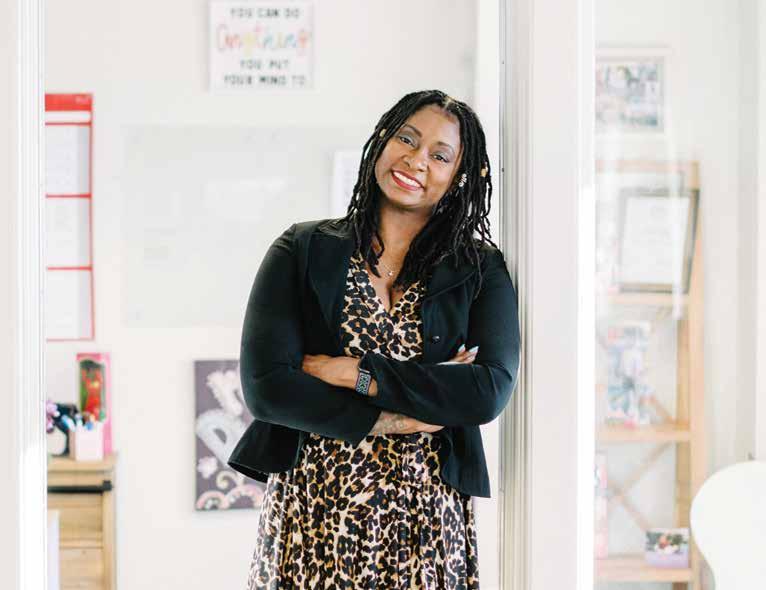
In 2015 Winnie Karanja founded Maydm, a Madison-based nonprofit aimed at bringing girls and students of color into STEM (science, technology, engineering and math) programs. “The local tech market was booming, and we were being approached by schools who served disadvantaged, vulnerable populations who said that they couldn’t afford to teach STEM,” says Calley Mannion, a grant writer for the organization.
Maydm offers a number of ways for girls to get comfortable flexing their STEM muscles, including after-school programs, internships and immersive summer camp experiences. The programs each have a specific focus, such as website development, robotics or cybersecurity.
“We talk a little and then we do a little, and we build competency in a safe and
secure environment,” says new executive director Dr. Christina Outlay. Students come away from Maydm camps with knowledge, experience and a portfolio.
Mentorship is a central value at Maydm. The organization’s mentorship program matches girls with local technology professionals of diverse backgrounds. Site and corporate visits reinforce the idea that STEM jobs are for everyone.

“Representation is critical. It can be intimidating to walk into a classroom where nobody looks like you,” says Outlay. “[But] when a girl comes to a Maydm camp, they are going to be greeted warmly by someone who looks like them, and that is where we start.”
As Outlay takes the helm at Maydm,
her top priority is educating girls that STEM skills translate to real-world employment opportunities. “IT fluency is becoming a non-negotiable skill for many jobs. We have so much local talent and brainpower, and I want to see that talent stay local and grow this community,” Outlay says.
— Annie Rosemurgy
Meghan Skrepenski is the founder of Raising STRONG Boot Camps, a Madison-area organization that connects families and promotes self-confidence for children. Skrepenksi, a personal trainer, member of the U.S. Air Force and part of the National Speakers Association, started the program to set an example for her own daughters: Grace, 14, and Amelia, 10.
In three years, she’s seen how helping girls feel empowered and see the value in empowering others can create stronger, deeper connections that lead to a healthier lifestyle.
“I want to raise daughters who would be recognized as people that will do the right thing no matter what. I also want girls to realize there is no benefit to kicking somebody down. There’s no ‘Queen Bee’ mentality [in life] — you don’t get to the top without other people,” explains Skrepenski.
Her boot camps are team-oriented and incorporate challenges. Skrepenski says the program uses bodyweight exercises
• I’m strong, mentally and physically.
• I’m brave. I’m fierce.
• I am beautiful (not I’m pretty). It helps you recognize something inside of yourself that isn’t anywhere else.
and people can move at their own pace. She also provides modifications for differently-abled people. When the program is completed, participants celebrate together at the end. “It gives families an opportunity to connect via exercise or physical activity,” she says.
Although originally named Raising STRONG Girls Boot Camps, Skrepenski renamed her company to widen its focus. She still hosts boot camps geared
toward girls, as well as Raising STRONG Kids programs at schools and for local organizations.
Skrepenski offered further insights into her girl empowerment work.
Why did the boot camp format appeal to you?
Boot camp is where people go to struggle. They usually go in as individuals and leave as a team. It’s based on my military experience. The great thing about the [boot camp] style is that you can do it anywhere and you don’t need any extra equipment.



Why is it important to teach girls teamwork at a young age?
The younger they are when they realize this, the better they can make friends that allow them to feel supported and connected. When we teach girls the power of supporting each other and how much better you can feel by bringing people into the fold instead of pushing them away, it is life-changing.
What do you think is the biggest challenge facing girls today?
Mean girls are a thing, and they start early.
At elementary-school age, they just want to feel like they fit in and are accepted. Teaching them skills that help them feel good about themselves and connect with others is valuable.
In middle school, it turns to, “I wish I felt good about myself, was prettier, smarter” — whatever it might be. If I catch them in middle school, I teach them the value of changing that inner voice.
How can we actively listen to our daughters?
Asking your kids permission to give them advice is huge, instead of saying “here’s how to fix that.” Instead of lecturing or correcting, take a step back and ask them, “do you want me to give you some advice on how I would work that … or would you like me just to listen?”
One great way to do that is during car rides, over a meal or grabbing dessert. It’s amazing that if you start with simple questions, [the conversation] continues to grow and spill out.
Check the Raising STRONG Boot Camps website raisingstrongbootcamps. com or Facebook page for information on upcoming boot camps that will be hosted at schools, camps and with other family organizations.
— Katy Macek
“‘No More Mean Girls: The Secret to Raising Strong, Confident and Compassionate Girls’ by Katie Hurley is such a good book. You can turn the audiobook on and listen with them. It has activities alongside it, and my daughters loved it,” says Skrepenski.
She also recommends:
• “The Confidence Code for Girls: Taking Risks, Messing Up and Becoming Your Amazingly Imperfect, Totally Powerful Self” by Katty Kay and Claire Shipman
• “Girls Who Run the World: 31 CEOs who Mean Business” by Diana Kapp
• “Good Night Stories for Rebel Girls” by Elana Favilli and Francesca Cavallo
• “Big Life Journal: Growth Mindset for Kids & Teens” by Alexandra Eidens

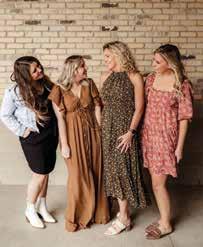

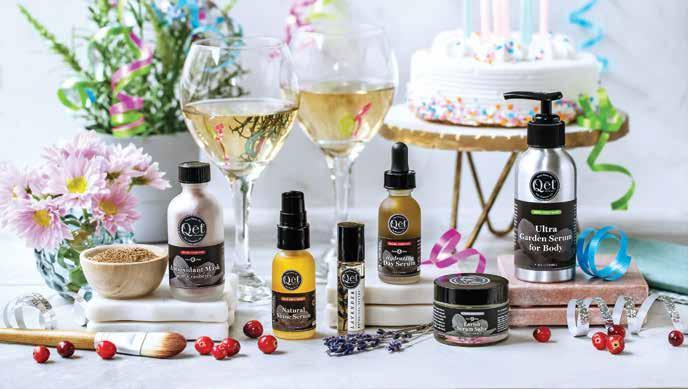
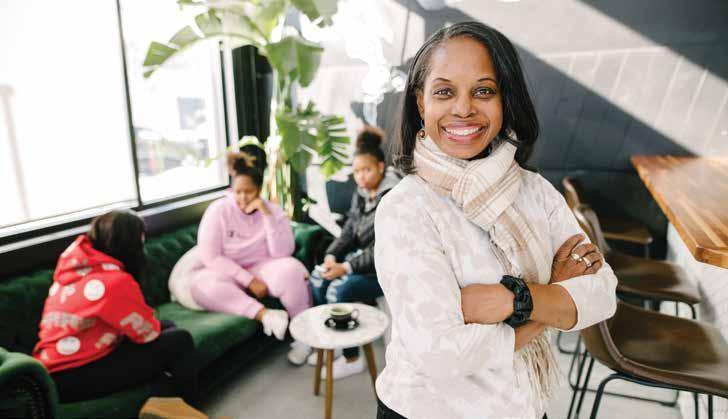
Corinda Rainey-Moore wants Black girls to see themselves as the leaders they are, which was her catalyst for founding Queen Leadership Academy, which offers biweekly programming for students at East High School.
The program is aimed at girls experiencing attendance or academic challenges, who are at risk of dropping out or making contact with the juvenile justice system or first-generation college applicants. “I really wanted to work with those girls, particularly because I felt like our system was focused more on young males and not enough on young girls who I knew were also having issues and struggling,” says Rainey-Moore.
Rainey-Moore, whose day job is community outreach and engagement manager at UnityPoint Health – Meriter, didn’t see herself as leadership material until getting involved in an enrichment and mentorship program in Chicago when she was in eighth grade. Since graduating as a firstgeneration college student from UW-Madison, she has built her career around supporting mental health and engagement in the community.
With intention, the program was a blank slate when it started with five girls, selected with guidance from East’s principal, in fall 2019. Rainey-Moore involved the girls in choosing the name and logo, deciding on rules and topics for discussion, and determining their meetup
schedule. “I wanted the girls’ voice in everything,” she notes. Meeting over lunchtime, Rainey-Moore and an East staff member facilitate discussions on leadership development and bullying, and creating vision boards. (Although paused for the pandemic, Rainey-Moore says she is working to restart the program hopefully this spring.) She deliberately kept the group small, but hopes to widen the circle a bit moving forward. A recent grant from the African American Opioid Coalition will allow Rainey-Moore to expand her offerings to include shadowing Black women in careers of interest to the girls and mentorship efforts (particularly in the healthcare and STEAM fields).
With more consistency, Rainey-Moore hopes to accomplish her original goal of training the girls to be peer mentors to middle school girls, easing the transition to both middle and high school. She’ll also engage parents more, offering a debutante-type celebration at year-end for the girls to showcase their achievements.
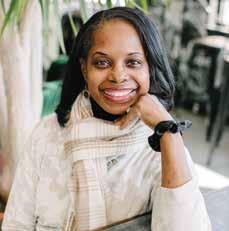
“I want them to see that there’s a community here that cares about them … that’s ready to support them as well,” says Rainey-Moore, adding, “my goal and my wish [is] that all these girls see themselves as leaders, see themselves as making change, and they see themselves as creating the society they want to live [in].”
— Candice Wagener

Beth Kille has electrified the Madison music scene for more than 20 years, leading bands, winning awards and recording 14 original albums. Though she adores this work, it’s only her second-favorite musical job. Her favorite? Serving as cofounder and music director of Girls Rock Camp Madison, a five-day summer camp that has helped nearly 1,400 girls find their inner rock star since 2010.
“Girls Rock Camp is everything I want to be doing and more,” Kille says. “People often hold back their creativity for fear of being judged, and we blow the roof off of that by creating a place for girls to be themselves, be bold and share their ideas.”
No musical knowledge is required, just a willingness to grow and take risks — including performing for a crowd on the camp’s final day. Campers typically adopt an instrument such as the guitar, keyboard or drums and jam on it in lessons and band practices. The experience also features songwriting classes and a taste of a professional recording studio.
The camp’s catalyst was a local dad: When he told Kille how his daughter kept getting waitlisted for a Chicago-based rock camp for girls, she decided to start one in Madison. Helping girls feel empowered has been the focus from day one.
Kille, who played the clarinet growing up, remembers how fellow members of the school band helped her battle the selfdoubt that so many teens experience. The experience was both formative and transformative, and she aims to replicate its best elements in Girls Rock Camp.
“To this day, a lot of the voices in my head are other middle school kids judging me. I realize they were just kids doing the best they could to get by, but we have an opportunity to show today’s girls that safe spaces do exist and that they can build them,” she says.
Plus, life lessons abound when you form a band with a group of strangers. Campers develop resilience when they receive feedback and solve problems together, and they discover how to handle viewpoints, personalities and creative processes that differ from their own.
“There’s a really important diversity piece to what we do, and part of that is helping campers realize how people who are different from them can push them,” Kille says. “Working with people you just met forces you to create something you never would have created otherwise, and that is a gift.”
— Jessica Steinhoff

From arts to coding to enrichment activities, these organizations focus on encouraging girls.
“Defending Black Girlhood” Podcast lilada.org/defending-black-girlhood-podcast
Girls Rock Camp Madison girlsrockmadison.org
Girl Scouts gsbadgerland.org
Girls on the Run South Central Wisconsin girlsontherunscwi.org Maydm maydm.org
Sports Mom Mantra sportsmommantra.com
Raising STRONG Boot Camps raisingstrongbootcamps.com




Scan here to read more about these organizations








A Madison-area couple strives to make an impact on family consumption habits using a “no guilt” approach for a greener, cleaner earth.
BY SHAYNA MACE PHOTOGRAPHY BY HILLARY SCHAVE
Corrina Crade Cunningham and Patrick Cunningham are the definition of successfully navigating life as working parents. Sitting in their sun-filled home office/ sunroom they deftly pass four-month-old River back and forth for diaper changes, feedings and rockings without missing a beat during both of our conversations. Their teamwork is seamless, and the loving attention they pay to their baby while concurrently talking about their other baby, The Mindfluencers, is a symbolic fusion of both of their passions: family and building their own business. Their entrepreneurial venture The Mindfluencers (themindfluencers.com) entails a website, TV show, YouTube and social media channels that encompass the concept of implementing easy, ecofriendly habits for families — without the guilt. That means educating people on sustainable swaps such as beeswax paper for Ziploc bags or digging into Madison-area companies that embody eco-friendly practices. The couple’s show, “Discover Wisconsin Presents: The Mindfluencers” (which they produce and host) will release its second, eight-episode season in October 2022.
In the meantime, the couple is also gearing up for the April YouTube release of another project they produce and host titled “The Adventures of Pogie the Yogie,” which stars Patrick as Pogie. The 15- to 30-minute episodes take kids ages 2-8 on adventures and end with yoga and mindful movement. Corrina describes it as “Blippi meets Mr. Rogers.” Being on camera comes easily to Corrina and Patrick. The two met in Chicago as actors in their mid-20s. At the time, Corrina had already formed her own entertainment company called Crademade Entertainment and had produced her first film entitled

Patrick says families hold the power to make small changes in a big way.
“Oranges.” The film was shot in Madison and 95% of the cast was from the area, she says.
She also worked as a casting director in Chicago, and she and Patrick ran in the same circles. (Patrick laughs that Corrina even turned him down for a role she was casting for her film before she knew him.) Patrick, who has a bachelor’s degree in fine arts from the University of Oklahoma and a master’s degree in fine arts from the School of the Art Institute of Chicago, was working in business development for a design firm and as an adjunct professor
at the time. Patrick jokes he asked Corrina to attend several social events before she agreed to go to one with him, and not long after that, the couple became an item. They got married in 2015. Wanting to be closer to family, they relocated to Madison where Corrina grew up.
In 2013 Corrina started MogaMind, a company whose goal is to “make mindfulness easy” by combining elements of gratitude, mindfulness and visualization. (Growing up, both of Corrina’s parents practiced mindfulness techniques, so she was raised with this mentality.) Patrick is a certified yoga teacher, so the two would produce and host meditation, yoga and mindfulness sessions for individuals and corporate clients.
Then, the pandemic hit. With Patrick working full-time for a cloud compliance software company and Corrina taking care of their two older children — Julian, now 5, and Penelope, now 3 — she started to feel a shift toward her feelings for MogaMind.
“For me, it wasn’t about meditating for
20 minutes in the morning [anymore], which was right for us when we started MogaMind. But now, I can’t do that,” she says, laughing. “I wake up to a screaming baby who wants to breastfeed. We love being creative — we’re entertainers. So, [MogaMind] started to feel like it’s not as creative as who we both really are.”
The couple made the decision to have Patrick continue MogaMind, which still offers corporate mindfulness sessions and yoga classes. In April 2021, they launched The Mindfluencers — the name a combination of “mindfulness” and “influencer.” Influencers work with brands who typically pay them to promote their products in social media posts and videos. Patrick and Corrina have collaborated with local and national brands such as Goodwill of South Central Wisconsin and Dropps, and those partnerships generate revenue so that they can continue their work. Corrina says they run The Mindfluencers as a business — but every company or product they share they love — or use themselves. At its core, The Mindfluencers is about being thoughtful about the resources we use and the world we’re leaving for future generations.
Corrina notes that social media has given women — particularly women of color — huge platforms to build their
brands. But, there’s also a negative side to it, she says.
“It’s shopping and clicking, and everything’s so quick. So, I had to jump on the bandwagon a little bit [to be an influencer] … but I wanted to be mindful about what I was creating, and the products I was promoting. I wanted a different twist on it.”
Both Corrina and Patrick shoot and host episodes of their show, and Patrick edits all of them. Corrina fits in chunks of work throughout the day when the older kids are in school, and the couple also frequently work and edit together after the kids have gone to bed. Episodes have centered on Habitat for Humanity’s ReStore, secondhand clothing store Once Upon A Child and Just Coffee Cooperative.
The couple’s no-guilt approach to eco-friendliness comes from their own experiences as a family. Corrina says the goal with The Mindfluencers isn’t about pitching everything that’s not eco-friendly in your home and starting over. Maybe you still buy fruit squeeze pouches for your baby to eat, but you make a concerted effort to bring a reusable coffee mug to the coffee shop for your daily cup of joe. It’s about implementing small, incremental changes to a family’s daily routine — many of which don’t really “feel” any different.
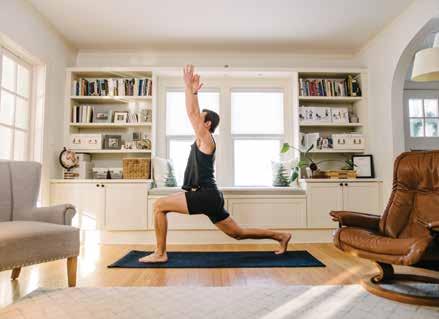
Consider subbing out some of your daily essentials for these easy, green substitutes that Corrina and Patrick love.

Full Circle and Lunchskins sandwich bags. Full Circle bags are reusable and easy to clean, and Lunchskins bags are 100% compostable and made from plants. The packaging for both is also recyclable. Find both at Target or on Amazon.
Sturdy tote bags. “We love our big burlap tote with our favorite city on it — you can find these at local boutique Cosa Boutique,” says Corrina.
Dropps detergent pods. “They’re easy to use … and they actually work. They come in compostable packaging, are made with earth-friendly ingredients and can be shipped right to your door,” says Corrina. Find them locally at Green Life Trading Co., or use code MINDFLUENCER on dropps.com for 25% off.
Brentwood Home items. “You can get anything from dog beds, to mattresses, to bedding, to yoga mats, to kids’ stuff and more. The company uses recycled materials, is 100% carbon-negative and follows Forest Stewardship Council sustainability standards. Their products are luxurious and a purchase from [the brand] will last a long time,” explains Corrina. brentwoodhome.com
Green Toys. Crafted out of 100% recycled plastic and made in the U.S., Green Toys' packaging is even made out of recycled material. Find them at Satara Home and Baby in Middleton.
Full Circle Sponges. This product is 100% plastic-neutral — for every one ounce of plastic used, the company collects waste plastic from the environment. They’re also made from plant-based cellulose. Buy them at Target.

“Being a mom was eye-opening to me [in terms of] consumption. But, we don’t always have a choice about what we buy — you can’t not buy clothes, shoes and toys for children. That all has packaging, and then you clean a lot more when you have kids,” she continues. “So when you look at all of those things, you realize the impact you’re having [on consumption].”
Patrick says families hold the power to make small changes in a big way — they

represent 60% of gross domestic product in the U.S. — and that’s what The Mindfluencers is targeting.
“There’s empowerment in knowing the impact that all of these households
Patrick shares the following about the local grocer:
◆ 100% green power (the Environmental Protection Agency defines green power as “electricity produced from solar, wind, geothermal, biogas, eligible biomass, and low-impact small hydroelectric sources.")
◆ Food Miles signage conveys to customers how far each item travels from where it’s produced to the shelves
◆ Shades over produce areas to reduce energy needs at night
◆ Offers customers money back for bringing in their own bags, and shoppers can keep the money or donate it to a local charity of the month
Plato’s Closet, Once Upon A Child and Style Encore These stores make thrifting look good.
Plato’s Closet sells men’s and women’s clothing, Style Encore caters just to women
and Once Upon A Child sells kids’ clothing and accessories. Sell your clothes and take the cash on the spot or use the money to buy other styles from the store. With only 15% of clothing recycled, this is a way to help those numbers increase. In just the last year, 18 million tons of clothing ended up in our landfills.
Dane County Department of Waste & Renewables Trash Lab
In partnership with the Madison Children’s Museum, this traveling exhibit informs visitors on how they can create less trash and rethink our relationship with waste. Housed in a fully accessible, 27-foot-long repurposed cargo trailer, the Trash Lab features more than 10 playful interactive stations, engaging stories and a wealth of data, along with compelling photography and video footage. landfill.countyofdane. com/projects/wastandrenewableprojects/ trash-lab
have. Yes, we’re just one household, but together as a group, household consumption represents one of the mightiest economic forces the planet has ever seen. So, small steps can make a bigger impact — which is our hope,” he says.
Corrina and Patrick are excited for what’s to come with The Mindfluencers. They’ve already collaborated with brands such as Green Toys, Green Life Trading Co. and Just Coffee Cooperative. Corrina has her sights set on the business becoming a juggernaut in the “green” family space. Lofty goals include growing their reach, being spokespeople on a larger scale for family/environmental issues, traveling and hosting live events at schools, and even partnering with toy and home product companies that align with their mission. The sky is the limit — but it all circles back to their dual loves of family and entrepreneurship.
“We don’t want to be working on stuff, and tell our kids ‘OK, we’re going to go and work.’ We want them to be included,” says Corrina. “We would love to be working on this full-time. This is our heart, and our passion.”
Owned by Sasha Stone (a BRAVA 2021 Woman to Watch), this shop has green swaps for disposable products you use every day — like paper towels, sponges and more. Stone is committed to zero-waste packaging and is almost 100% plastic free.
Green Cab

This local cab company has a 100% electric vehicle fleet. Patrick says featuring them in a Mindfluencers episode perfectly fit their focus on making, easy, green choices. According to Green Cab’s website, they’ve saved 100-plus tons of CO2 emissions, which is equivalent to the output from 11,252 gallons of gasoline.
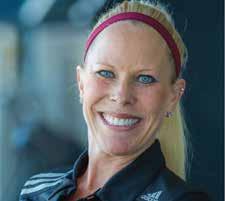


Three tips from Princeton Club’s expert personal trainers to make your 2022 ambitions happen — even if you’ve fallen off track.
Your mindset determines your direction. We believe you can achieve your goals, but if you don’t believe in yourself, you will never make it past square one. What are you telling yourself about yourself? Read that again! Do you find yourself saying you can’t or won’t do something? Flip the switch! When you catch yourself thinking this way, replace those thoughts with positive truths.
Here’s how it can look:
LIE: I’ve failed before. Why even try again? Replace with TRUTH : I am proud of the courage I had to try before and will learn from previous mistakes. I am capable of change!

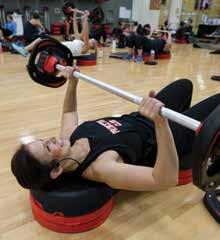

Long-term goals can feel out of reach and be intimidating, so break it down! Create micro goals — small, attainable goals that will create your path to achieving your overarching goal. This could look like walking 30 minutes on the track every Wednesday, taking a group fitness class with a friend every Friday or packing a healthy snack twice a week. Small, healthy changes over time lead to major progress. Personal trainers are masters at helping people create and integrate meaningful micro goals!
Schedule your workouts on your calendar a week or more in advance. Then show up like you would for a coffee date with your best friend. No doublebooking or last-minute cancellations — YOU are worth showing up for!
We know life happens, so when you don’t make your morning workout because of a flat tire or the kids missed the bus, give yourself a mulligan (one maximum per week). Pivot your plan and reschedule your workout for over lunch or after work. You can still make it happen!

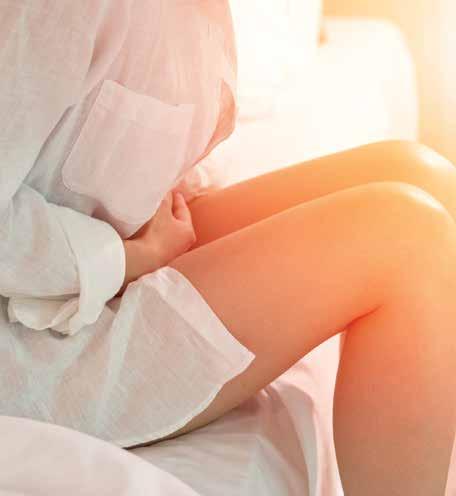
You might be surprised to know that this common emotion can even influence your health “down there.”
By Sue Sveum
Fueled by information overload and everyday stressors, stress can affect every aspect of your life — from interpersonal relationships, physical health and emotional wellbeing, along with work and family life. And, it’s all too common. What you might not expect is that it can affect your pelvic health.
“Stress can intimately affect pelvic floor issues,”explains Dr. Temitope Rude, a pelvic health provider at SSM Health. “Two of the biggest ways stress interacts with pelvic health are urinary urgency and frequency — and pelvic pain.” She compares the impact of stress on pelvic floor muscles to the way stress causes a stiff neck or headache. Rather than a
headache, pelvic muscle tension can cause back pain, abdominal pain, constipation, bladder symptoms and pain with walking, exercise or intercourse.
“Having pain and bladder symptoms can already be very stressful as they interfere with day-to-day activities,” says Rude. “But, it often becomes a vicious cycle that impacts your quality of life in many ways.” Initially, stress causes pain and incontinence — and then those pain and bladder issues create more stress.
To make matters worse, incontinence is heavily stigmatized as a sign of being weak or infirm — implying that you’re at fault for an
inability to control your bladder. “These notions are deeply impactful and lead to many women feeling shame and responsibility for their incontinence,” says Rude, adding that on the flip side are the “whoops, shouldn’t laugh so hard!” jokes heard on TV or even among friends. “It’s become almost normalized as an annoyance that goes along with being a woman,” she says. “Either way, the outcome is people spending a lot of energy and emotional stress trying to hide — or manage — their incontinence.”
And pelvic floors muscles are affected by stress in other ways, as well. In addition to bladder issues, pelvic-related pain can be a huge stressor for women — often leading to loss of wellbeing and intimacy in relationships as well as day-to-day activities. And bowel symptoms, like constipation — or worse, fecal incontinence — can also cause great stress for women.
So, what can you do? Rude says simply recognizing that stress can cause pelvic health issues is the most important step in ending the cycle. Online research can be a quick, private way to learn more about

“ ”
Don’t wait for your annual physical, and don’t be embarrassed — stress and pelvic health are definitely health issues your provider will be happy to help with.
– Dr. Temitope Rude

No matter what stage of life you’re in, SSM Health wants to make sure your health continues to be a priority. We are here to provide you with safe, high-quality and personalized care for you and your family.
SSM Health has convenient options to receive care when and where you need it, in person or online.
To learn more or schedule an appointment visit ssmhealth.com/WIWomensHealth or scan the QR code.
pelvic floor conditions — such as which food and drinks can worsen bladder symptoms, or techniques for meditation, stretching and yoga that are safe and simple to try on your own.
Friends, family and colleagues are another incredible resource.
“It’s very helpful to hear firsthand from someone you know that these concerns are common,” says Rude.
“Many patients find that their loved ones can give them insight into what to expect and how to advocate for themselves.”
But ultimately, talking about your concerns with a provider, or asking for a referral to a pelvic health specialist or physical therapist, is the best next step in managing pelvic health issues. “I’d encourage anyone experiencing these concerns to make an appointment to address them,” says Rude. “Don’t wait for your annual physical, and don’t be embarrassed — stress and pelvic
health are definitely health issues your provider will be happy to help with.”
Left unchecked, chronic stress can snowball into a myriad of health conditions. Rude says taking time to prioritize your personal needs is critical to lowering stress levels. Even small, intentional changes can have an impact. As women, we often expect a lot of ourselves and can be our own biggest critic.
“In my opinion, the most important mindset shift is to be radically kind and gentle to yourself,” she says. “Focusing on the many things we do well and allowing space for our shortcomings, goes a long way to decreasing stress and opening ourselves up to help.”
SSM Health offers treatment options at its locations throughout Southern Wisconsin. To learn more visit ssmhealth.com/womenshealth.


Stress manifests itself in many different ways, from your mind to your muscles. Here, Tasha Miller of Community Pharmacy shares some of their favorite remedies for stress relief.
Passionflower For trouble falling asleep or staying asleep, it’s great at calming those “monkey mind” thoughts running through your head.
Women’s Calmpound by Herbalist & Alchemist This helps to balance hormones thrown off by stress, calming cravings, moodiness and bloating.
Adrenal Health Daily Support Packed with adaptogenic herbs, this prevents burnout, by supporting your adrenals and improving your body’s physical response to stress.
High-quality multivitamins A great choice, especially if you’re taking oral contraceptives, which can deplete several nutrients.
Magnesium glycinate Easily absorbed, this relaxes muscles, relieving tension and cramps. Taking this before bed also helps relax you to sleep.

L-theanine amino acid This supplement, found in green and black tea, reduces anxiety and stress, and promotes deeper sleep.
Tea A cup of tea creates a relaxing oasis for yourself in the middle of the crazy.
Essential oils Lavender is the essential oil that first pops into most people’s minds when talking about stress, but you can actually use any scent to induce positive emotions. Choose one that is meaningful to you (or just smells good) and inhale it while doing something relaxing. Then keep it on hand during periods of stress, and inhaling that same scent will take your mind and emotions back to that relaxed state. This trick also works great for anxiety. The more often you reinforce the association, the stronger the effect will be.

WE TAKE THE TIME TO LISTEN AND LEARN, EDUCATE, AND PROVIDE YOU WITH A FULL RANGE OF HEALTH OPTIONS.
Self-care Make time for yourself with aromatherapy bath salts, a luxurious hair mask or some essential oils for anytime stress relief.
COME SEE WHAT SETS US APART.
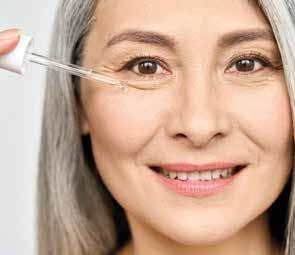
Feeling good and looking good go hand in hand. If you’re feeling stressed and frazzled, it’s critical to take care of yourself. According to Maria Henry, owner of Luminous Rose, a natural and organic skin and haircare line based
outside of Madison, stress can take its toll on skin and hair.
Her clients’ most common skin concerns are acne and rosacea. It’s not uncommon for women to get an unexpected outbreak of acne, even if they’ve never had a problem before, says Maria. Why now? Stress, hormones and even extended maskwearing are all factors.
And while rosacea is a chronic condition, those that have it often find that stress exacerbates the symptoms.
Maria, a skin and haircare formulator, creates all-natural beauty products. Combatting stress, she shares, is all about self-care. “Slow down and take time to do something nurturing for yourself,” she says, adding that tending to your inner self will positively affect your outer self — including skin and hair.
Maria recommends a daily beauty routine, starting with a gentle cleanser (hers contains green tea and chamomile) before bed, followed by a facial serum
and moisturizer. When you’re resting, she explains, “your skin cells rest and regenerate.”
Her popular Shea + Rose Daily Moisturizer is a plant-based cream made with rosehip seed oil, which is a natural alterative to retinol.
“It’s anti-aging and helps with both redness and acne,” she says. She also formulates a variety of moisturizers and serums for every need, from rejuvenation to sensitive skin — with ingredients such as blue tansy oil, mango butter and rose.
And when stress causes a dry, itchy scalp, using a plant-based, sulfate- and silicone-free shampoo and conditioner does wonders. Or, try one of her longlasting shampoo bars. With a good hair routine, she says you’ll feel the difference right away.
“It’s important to prioritize yourself — even for 10 minutes,” stresses Henry. “It’s these little moments that add up and help get you through your day.”
– Sue Sveum
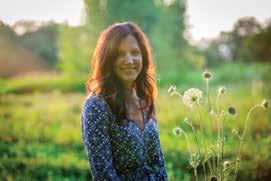
Maria Henry Founder + Formulator



During these trying times, here are some ways to thoughtfully reduce stress.
By Sue Sveum
Stress is a fact of life — but how we handle it makes all the difference.
Amanda Van Elzen, nurse educator at Associated Physicians, sees her share of patients with stress. And according to Van Elzen, stress can be short- or long-term.
“Both can cause difficulty sleeping and put a strain on work productivity and relationships,” she says, “which can negatively impact your happiness, job performance and even income.” The effects of stress affect you both physically and mentally. You’ve probably experienced one or more of these common symptoms:
Physical
• Fight or flight response
• GI upset
• Trouble sleeping
• Muscle tension and chronic pain
• Headaches
Mental
• Heaviness in your chest
• Difficulty communicating, straining your personal and professional relationships
• Feeling tired, anxious or depressed
• Quick to anger, more emotional than usual
• Trouble making decisions, solving problems or concentrating
According to Van Elzen, it’s important to recognize and address stress, for several reasons.
“When our brain senses imminent danger, it triggers the release of adrenaline and cortisol, that keep us safe in emergent situations,” she explains. “But too much, or repetitive high levels of these stress hormones can have adverse effects on our minds and body — causing fatigue, anxiety and depression, heart disease, weight

...Repetitive high levels of stress hormones can have adverse effects on our minds and body...
gain and increased risk of diabetes.”
There are many healthy ways a person can alleviate stress — including reading, walking outside, meditation, exercise, chatting with a close friend or even binging your favorite Netflix show.
“With our busy personal and family schedules, taking time for stress relief may seem impossible some days, but even doing breathing exercises for five minutes before you fall asleep reduces your stress and stress hormone levels,” says Van Elzen. “Make it a nightly routine, and it can help you fall asleep faster, and stay asleep longer.”
Similarly, meditation and mindfulness are great ways to help you achieve inner calm — and you can do it anywhere, anytime.
Talking with a therapist can also do wonders for your mental health. They’ll help you manage your stress by listening, giving you tools to re-train your brain into a positive mindset and help you deal with setbacks or traumatic experiences.
In fact, just changing your mindset from negative thoughts to positive ones has proven to change how you feel, creating a more satisfying personal and professional life. “Negative thoughts can distort our perception of experiences, leading to physical and mental symptoms, mood and anxiety disorders, and overall unhappiness,” she explains. “Besides, no one wants to be around someone that’s negative all the time!” Having a rich and healthy diet can lead to a rich and healthy mind, as well — especially if you get creative in the kitchen. Meal prepping is a great way to try new recipes — and have weeknight dinners prepared in advance, helping to reduce nighttime stress.
– Amanda Van Elzen “ ”
Whatever your stress relief looks like, it’s important to make the time to do it — to help with both shortterm and long-term stress,” says Van Elzen. “When you’re in a positive and less stressed mindset, you’ll be happier and healthier, both mentally and physically.”

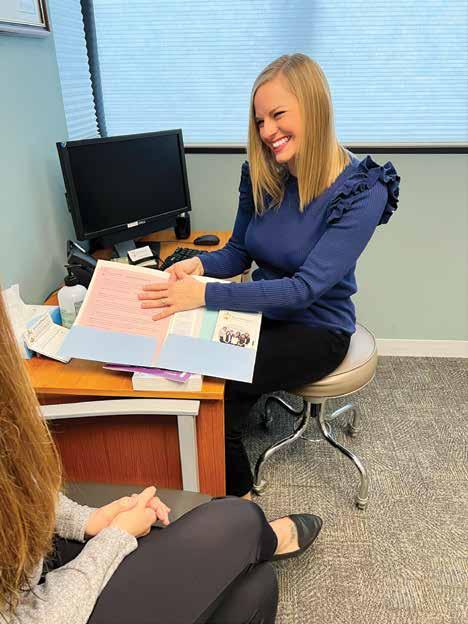
Amanda's role is the first of its kind in the Madison area. She provides a wealth of resources to help our OB/GYN patients navigate healthcare and make more informed decisions. She's also your education guru for pregnancy, lactation, gynecological surgery, and mental health.
While patients can schedule with her whenever they need, she automatically sees patients at the following appointments:

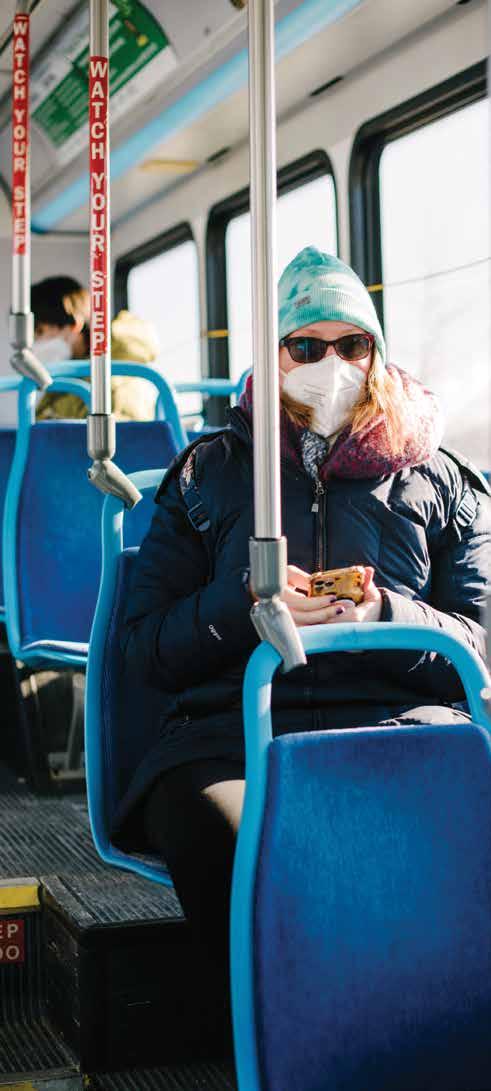
Being differently-abled can encompass a varying level of abilities, living situations and dayto-day routines. Figuring out how to best navigate daily life, which includes outings to public places that may or may not be accessible, is part of the territory — but local organizations and individuals are actively working to make Madison inclusive to everyone.
BY SHELBY ROWE MOYER
SCHAVE
In many ways, the Disability Pride Madison Festival held at Tenney Park is like any other — there’s live entertainment, food and art vendors. But a few key differences have historically set it apart, says Jason Glozier, the former disability rights and services program specialist for the City of Madison’s Department of Civil Rights.
Glozier, who is now with the Wisconsin Coalition of Independent Living Centers, says that at the Disability Pride Madison Festival, interpreters are present for all stage performances; all stages have ramp access; and quiet, air-conditioned tents are available for those with heat and sound sensitivities. Plastic flooring is also laid down in strategic spots throughout the festival for wheelchair accessibility.
“[Festivals] are great opportunities to create environments where people with disabilities can be performers, can be spectators, can be full participants in these environments,” Glozier says.
As of 2020, all Madison festivals are required to provide additional layers of accessibility, including stage access, proper seating, accessible restrooms, paths and parking and even festival promotion and communication. It’s easy to take these things for granted, but ultimately the ability to use the bathroom or see a stage can make or break a participant’s experience at an event.
In general, being able to fully participate and engage in an

“When you have a disability, you realize how inaccessible the world really becomes.”
environment is an often overlooked and underappreciated privilege for those who are considered able-bodied and neurotypical (which is a person who doesn’t have a cognitive disability). Things like navigating stairs and uneven terrain, easily moving through tight corridors, tolerating loud spaces, comfortably hearing and seeing what is going on around us — these are all aspects of daily living that many of us take for granted. But for some people with disabilities, they can become major obstacles that block access to places and experiences, and limit independence.
“When you have a disability, you realize how inaccessible the world really becomes,” Glozier says.
Twenty-six percent — or one in four — adults in the U.S. have a permanent disability that impacts major aspects of their lives, according to the Centers for Disease Control. This may include difficulty with mobility, loss of hearing or vision or cognitive disabilities.
The odds of being temporarily disabled due to an injury, pregnancy or mental health issue is also relatively high, according to the Council for Disability Awareness. The council states that one in four of today’s 20-year-olds will be out of work for at least a year because of a disabling condition before they reach 65 years old. Each year, about 5% of working Americans will have a short-term disability of six months or less. In other words, the odds are good that disability, whether it’s minor or life-changing, will likely affect us all at some point during our lifetimes.
If you don’t have any issues with accessibility, you may not give a second thought to how a space is designed. But for someone with limited mobility, a quick jaunt to a local shop might be impossible if the shop has steps at its front entrance — and no wheelchair ramp. And think about how many businesses you visit that have tight spaces or little room for navigation between tables.
Glozier says he’s been surprised at times at how little progress has been made in accessibility. One day, he and his friend (who is the ADA coordinator for the Wisconsin DNR) decided to travel up and down State Street to see how many buildings his friend — who uses a

“We’d like to get away from businesses thinking of ‘minimum compliance’ for accessibility, and utilize best practices of inclusion.”
wheelchair — could get into.
“It’s the 2000s, I thought, it can’t be that bad,” Glozier recalls. “Out of all the businesses on State Street, we found 32 that were entirely inaccessible, and that really highlighted a significant problem with access to the city.”
A 2019 study conducted by Downtown Madison, Inc’s (DMI) Beyond Compliance Task Force revealed some key hindrances that discouraged people with disabilities from coming downtown.
Of the roughly 90 people that responded to the study, 63% said they experienced mobility barriers. Lack of accessible parking, uneven sidewalks and busy crosswalks were common issues. Although the study focused on downtown, Jason Beloungy, chair of the Beyond Compliance Task Force, says there are inaccessible buildings throughout the city, of course. “[But downtown] is concentrated, so it’s obvious, and that’s … noteworthy. But we’d like to get away from businesses thinking of ‘minimum compliance’ for accessibility, and utilize best practices of inclusion. This should be a focus [for businesses] — so how can we get there?” he says.
Infrastructure is one of the most expensive, and therefore challenging,

obstacles to address, says Beloungy, who is also executive director of Access to Independence, a local nonprofit that provides advocacy, services and resources to people of all ages with all types of disabilities.
Adapting the exteriors and interiors of buildings so that everyone can navigate them or creating more accessible parking, for example, are among the most obvious solutions — but take the longest to correct, Beloungy says. It’s incredibly expensive to renovate the exterior of an existing building to remove stairs and add a ramp which is why it can be challenging, he says. So instead of getting hung up on this difficult problem, the task force, as well
Countless organizations exist locally that help meet the needs and protect the rights of people with disabilities. They include, but are not limited to:
as Access to Independence, are working hand-in-hand on more attainable solutions. Access to Independence has an Accessibility Services Program that is providing accessibility assessment and technical assistance services for businesses and organizations in the region. The task force is handling accessibility at festivals and events, within the Streatery program and is planning a forthcoming event.
When the City of Madison launched its Streatery program in response to the pandemic, the task force created a set of standards and best practices restaurants could use. The guidelines took into consideration things like placing tables next to trees with low-hanging branches,
A local nonprofit that provides advocacy, services and resources to people of all ages with all types of disabilities in south-central Wisconsin. They focus on an Independent Living Philosophy, which centers on “providing specific services that help people with disabilities live as independently as they choose.” accesstoind.org
which could be dangerous for a person who is blind or has low vision.
Beloungy says measuring the impact of the task force’s education and guidelines is something they hope to provide in the near future.
Beyond adaptation, Beloungy says the task force is planning to host an event this summer that will bring together architects, designers and people with disabilities, so that new construction and renovations are designed in a way that is truly accessible. Based on the feedback from people with disabilities as well as agency observations, even new or renovated buildings can have flaws or be inaccessible. The reason being: ADA
The Arc-Dane County
A nonprofit serving adults and children with intellectual and developmental disabilities — as well as their families — to ensure their rights are being upheld and that they are being given opportunities. Provides education, advocacy, support and a legislative voice. arcdanecounty.org
compliance standards have a lot of gaps or may conflict with local ordinances that make navigation challenging. Automated doors, for instance, are not required by the ADA. Even parking lots aren’t designed with accessibility in mind — with ramps and sidewalks located too far away from accessible stalls, forcing people to navigate through vehicle traffic to get to them.
The hope is that by bringing industry professionals and people with disabilities together, best practices in inclusive design can be incorporated during the design and construction stages. Partnerships are the linchpin of all of the work Beyond Compliance is doing, he says.
“Instead of people pointing at each other and saying things need to be better, we need to bring people together and [ask ourselves] how can we change it? Otherwise, we don’t get to the root of the problem,” Beloungy says.
At birth, Jennifer Diedrich was diagnosed with Spina Bifida — “the most common permanently disabling birth defect that is associated with life,” according to the Spina Bifida Association. Researchers and medical professionals still don’t know exactly what causes Spina Bifida. The condition happens in utero when a fetus’s neural tubes don’t fully develop, and so the spine is split. Usually, this happens within the first month of pregnancy, when the neural tube is forming. Spina Bifida has varying levels of severity, from having very little to no effects, or in the most severe cases, the spinal cord is damaged making it difficult for a person to feel or control the lower half of their body. Diedrich has the most severe type, known as Spina Bifida Cystica.
For Diedrich, that means that parts of her spinal cord and nerves come through an open part of her spine, causing nerve
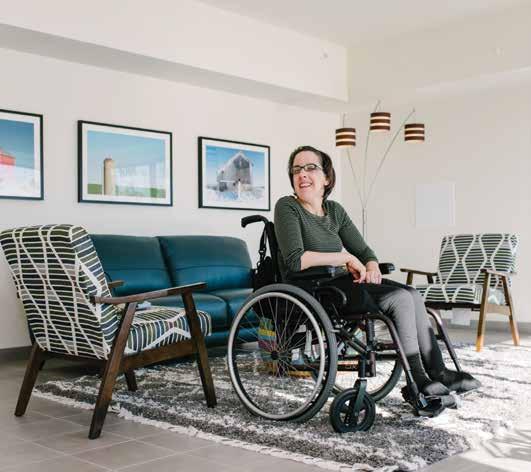
“People don’t realize sometimes what’s accessible until they’re in a situation themselves ... or they’re helping me ... and they realize what I can and cannot do.”
damage and other disabilities. Diedrich also has hydrocephalous (water on the brain), so she has a shunt in the left side of her head that drains excess cerebrospinal fluid into her stomach. Hydrocephalous is also common for people with Spina Bifida Cystica.
For approximately the last 20 years, Diedrich, who lives in New Glarus, has used a wheelchair to get around. Throughout the years, her disability has worsened, she says, and she can’t move her lower body without help or the use of her hands. Because she relies on her wheelchair to get around, going somewhere new requires additional layers of planning. Doors can be a challenge. Some are very heavy and so she needs someone to hold it open for her. Stairs are another obstacle.
“I’ve lived in New Glarus for 12 years now, and there are certain buildings or restaurants that I’ve never been in because there are steps [or some obstruction] to get into the building,” she says. “I do
The Beyond Compliance Task Force — Downtown Madison, Inc.
A committee within Downtown Madison, Inc. that works to “identify, support and promote projects and economic opportunities that make downtown Madison more inclusive and accessible to people with disabilities.” downtownmadison.org/our-work/ inclusiveness
Disability Rights Commission — City of Madison
Provides policy recommendations to the mayor, city council and department of civil rights, makes recommendations to city departments and other committees and commissions regarding facilities and services and collects comments and concerns from people with disabilities and the organizations that serve them. cityofmadison. com/civil-rights/programs/disability-rights-services-program/ disability-rights-commission

notice it. If I want to go somewhere, I look to see if there are steps [to get in].”
For the most part though, she says she can go out and do the things she wants to do. A handful of shops and restaurants in downtown New Glarus are easy for her to get in and out of on her own, and there are several parks in the area that she enjoys visiting.
“I stick to places I know I can get in and out of on my own,” she says. “… People don’t realize sometimes what’s accessible until they’re in a situation themselves, unfortunately, or they’re helping me in some way, and they realize what I can and cannot do.”
Abigail Tessmann — who founded Transit2Go, a program she created to teach people with disabilities how to use and navigate the bus system, and a disabilities advocate who has cerebral palsy — says she wishes more people would understand what having a disability may encompass, and how people who are differently-abled have varying abilities.
Tessmann says her cerebral palsy doesn’t affect much of her day-to-day life. Cerebral palsy is a neurological condition caused by brain damage in utero that most commonly effects motor and movement skills. The inability to drive is probably the most limiting aspect of her disability, Tessmann says. She has tremors, difficulty with fine motor skills and balance is challenging if she’s on her feet for too long.
Her need for greater independence is what led to her mastery of the bus system, and now she teaches other people with disabilities how to feel comfortable and confident taking public transit. She rides the bus with clients during her training sessions and explains that they can ask the driver for accommodations, like help getting on and off the bus or requesting that the driver wait until they’re seated to pull away from the bus stop. In other words, some of what she helps instill is self-advocacy — for clients to be brave enough to voice their needs.
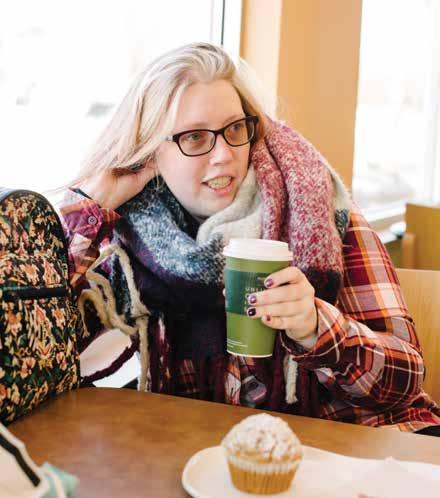
“You can observe, and you can understand if someone needs something and then you can address it.”
In general, Tessmann is sometimes frustrated with the lack of consideration when it comes to public spaces and how the design or operation of those spaces don’t take into consideration the varying needs of the people who frequent them.
She says the Hilldale Target is an ideal example of accessibility. To get in and out, guests can take the stairs, the escalator or the elevator — which offers options for those with varying abilities.
Other design elements such as larger wayfinding signage, bathrooms with adult changing tables, places to sit and rest and disability training for employees would make visiting some places easier, she says.
Workplace accommodations supported and followed by management and staff also make it easier for people with disabilities to live and work independently. Petra Zwettler — who has been working for the Forest Products Laboratory in Madison for the U.S. Forest Service for the last 15 years — has epilepsy which causes unpredictable seizures.
The support she gets from her supervisor Robert Ross has been lifechanging, she says. Ross is a supervisory research engineer at the Forest Products Laboratory and he and Zwettler have volunteered and also been on the board of The Arc-Dane County, an advocacy and rights organization for kids and adults with intellectual and developmental disabilities.
Ross says he remembers the first time Zwettler had a seizure at work, and she
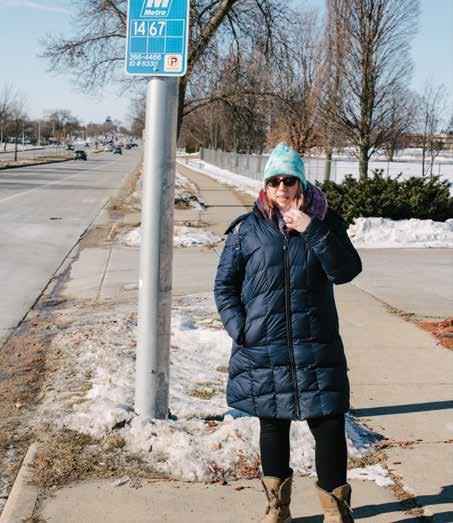
Disability Rights Wisconsin Offers legal advocacy and rights protection for Wisconsin adults and children with disabilities, including issues surrounding civil rights, abuse and neglect, access to services and education, crime victimization and discrimination. disabilityrightswi.org
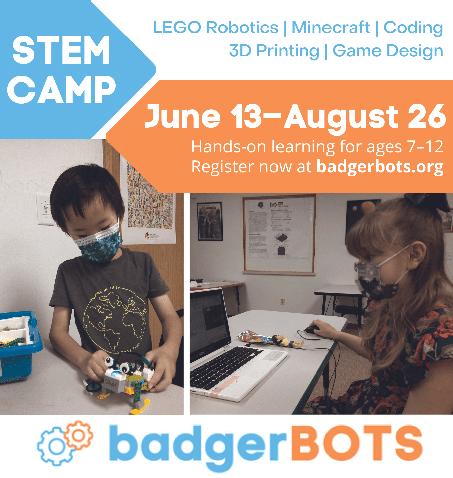
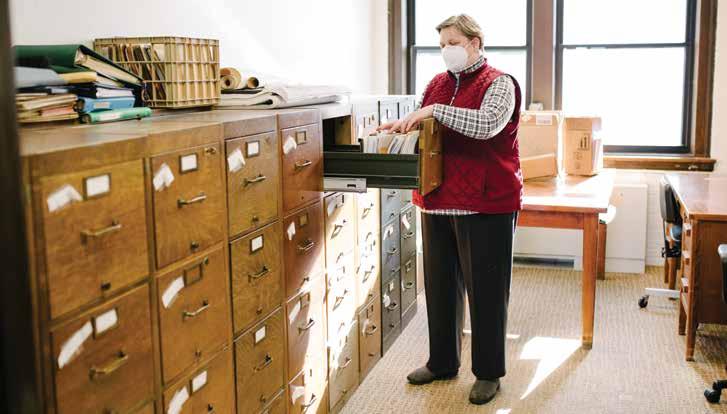

was laying on the floor of the office. “So, we bought her a camping mat and a pillow. When she has a seizure, she can lay down and we’ll [check in to] see how she’s doing. You’ve got to have an organization that’s willing to do that and be observant of little things.”
Ross adds that a lot of workplaces will hide behind the fact that it’s illegal to ask someone about their disabilities. “But you can observe, and you can understand if someone needs something and then you can address it.”
Zwettler says the laboratory has provided a very supportive work environment for her (pre-COVID, when
An apartment community in New Glarus that intentionally integrates people with disabilities and neurotypical/able-bodied tenants to provide a rich living environment for everyone who chooses to call it home. homeofourown.org
staff were working at the office). She feels safe asking for help and contributing her perspective. Her opinions and feedback have also affected change The Arc-Dane County, when she’s given input about event management and how official meetings are run.
Anyone can be an advocate, and anyone can be an ally, says Ross. You just have to listen, observe and speak up.
“We have people in our communities that don’t get to enjoy the community the same way. If we find that acceptable or make excuses about why it’s acceptable, that’s a problem.”
Works with people with permanent disabilities to help them find and maintain housing, whether it’s home buying assistance, rehabbing homes so that the owner can safely and accessibly continue living there or helping individuals find rental housing. The organization is based in Madison, but serves people throughout Wisconsin. movin-out.org
Aside from advocacy, economic impact is often a driving force for change, says Beloungy. Businesses are motivated to adapt if it means more customers, more clients, more profit. And that’s a meaningful incentive. But accessibility comes down to caring about fellow community members and their ability to participate in anything they choose, he says.
“I think we should care about this because we have a segment of our community that’s being excluded from enjoying things,” he says. “Whether that’s employment, education, housing, public spaces or businesses. We have people in our communities who don’t get to enjoy the community the same way. If we find that acceptable or make excuses about why it’s acceptable, that’s a problem.”
A hands-on public transportation training program that takes people with disabilities through the City of Madison bus system so they can learn how to comfortably navigate the process with the goal of being able to gain more independence. transit2gonow.com

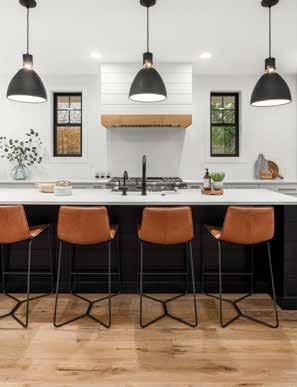

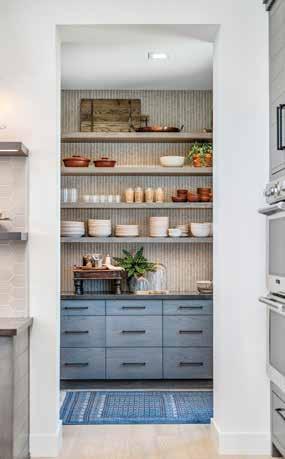




An organized home is a happy one.
Sometimes we just don’t realize the need to organize until everything becomes, well, unorganized. Brea Bartelt, interior designer at Classic Custom Homes of Waunakee, says in their 30 years of homebuilding they’ve learned that including specific areas for storage is essential when building a new home.
And the rewards will be immediate.
Building in space to put things will help you the minute you move in. “If everything gets tucked in a back room, you more than likely won’t even know what’s in those boxes,” says Bartelt. “Having a system keeps everything in better shape — and you can find it faster.”
So where do you start? Each room has its own unique storage needs, with kitchens and bedroom closets getting lots of attention. According to Bartelt, larger pantries are becoming more and more popular, especially with doors and drawers, making everything look clean and finished. “We’re also using more specialty organizers in the kitchen,” she says, “like spice and utensil pullouts, pot and pan organizers, and peg systems in the drawers.
For bedrooms, it’s important to know how you use your closets. If you prefer to hang your clothes, then make sure there’s enough hanging storage. If you fold, include more shelves and drawers.
“In finished spaces we often see builtins with a combination of closed and open storage to better utilize the space,” says Bartelt. “Open storage is nice for the more decorative items and closed storage is perfect for the less visually attractive things.” Family room built-ins, for instance, offer great storage options that can even enhance the décor.
And don’t overlook a home office space. “Now that so many people work from home it’s important to make it a functional space with built-ins,” says Bartelt. “Keep a couple decorative items visible on shelves to give your Zoom calls a great background — and tuck office appliances and printers into a dedicated

space that works into the design.”
Laundry rooms, mud rooms and drop zones all offer great storage possibilities to help to keep the clutter localized. You can make open storage spaces look nicer by utilizing baskets and containers — and keeping continuity among the colors and textures of the containers will add a decorative element along with function.
And don’t forget the garage. “It’s probably the most overlooked in terms of built-in storage,” says Bartelt. The garage is yet another area where organization is essential. There are so many items currently on the market that allow you to organize your garage space that offer function and flexibility — making your garage look and feel more organized.


Create a space you love.
When it comes to remodeling, Dream House Dream Kitchens has seen many trends come and go over their 35 years in business. Some reflect home innovations, and some are purely aesthetic. Some are a flash in the pan and others withstand the test of time.
So, if you’re planning a kitchen or bath remodel any time soon, what can you expect?
“First off, do the remodel for you – not thinking about the next owner,” says Jerry Schmidt, director of sales. “It’s important to make it a space you love. We won’t let you get so far off the rails that it won’t sell.”
The biggest change in bathrooms, according to Schmidt is larger showers, often created by doing away with large, jetted tubs that used to be so popular. More people these days prefer a quick shower. Removing a tub, that’s taking up space allows room to expand the shower — possibly with room to spare to add in a bench or a rain shower head.
Another trend is the stream shower.
Tiled and glassed-in from floor to ceiling, steam is pumped in, creating your own steam room. “It’s great for someone with a cold or allergy,” Schmidt says. He adds that removing a large tub could also free up space to create a double vanity. And while going tub-less is a personal preference, he suggests keeping one in another bathroom for kids or guests — with a nicer tub and fun tiling.
In the kitchen, Schmidt says the two biggest changes they’ve seen in recent years is with the island and appliances.
“Islands are typically all one level now, creating one big, open space,” he explains.
“That provides more prep space as well as room for serving.” Countertop materials have also seen a change, with quartz overtaking granite in popularity.
“Quartz is a controllable product,” he explains, adding that although it’s 93% natural material, customers like that it

can still be manipulated into a pattern or color of their choice.
Higher-end appliances have also become popular. “With people working from home and staying in more, families are cooking [more],” Schmidt says. Other trends include water dispensers inside the refrigerator, induction cooktops for more even heating, and warmer, more natural paint and cabinet colors.
One style that’s not going anywhere anytime soon? White cabinets. “White will never go away,” he reassures, “but one way to update the look is by adding a wood-accented island or shelving in green, blue or olive to add a pop of color.”

“ ”“First off, do the remodel for you – not thinking about the next owner.
It’s important to make it a space you love.” — Jerry Schmidt, director of sales




The details make the difference.
Although Willy Keuler always intended to be a builder, he picked up a hammer and set about learning highend carpentry skills first, by becoming a master carpenter. That was 43 years ago. He made those skills the foundation of his business when he founded Keuler Construction 29 years ago.
The company has assembled a team of the best subcontractors in the area with the same commitment to quality. And, almost every employee has occasionally been found out on the job site, swinging a hammer — including Willy himself.
“Being hands-on has helped us develop a deeper relationship with our clients and ensure that they enjoy the experience of building a dream home,” explains vice president Bailey Keuler. “The choice to build a home is a major decision and being involved in all aspects — from design to the final construction — really helps us capture our clients’ visions and bring them to life.”
Most clients have a rough idea of what they want before they build a home, and it’s Keuler’s job to take those ideas and refine them to create a one-of-a-kind home. To help clients visualize, Keuler produces photo-realistic 3D renderings for their clients. They also keep a close eye on residential design trends to help clients create something that they’ll love for a long time.
Have a challenging idea? Don’t worry. “We’re not afraid of a challenge,” laughs Bailey. “With Willy’s incredible construction knowledge, we are pretty unique in terms of capability to build incredible homes.” So, whether it’s incredibly ornate woodwork or building a home with hundreds of steel beams, Keuler will rise to the challenge. While most builders use subcontractors to handle the more difficult carpentry, the Keuler team has built countless custom pieces for clients. “We’ve built everything from custom mantles to fine millwork to custom-built staircases,” says Bailey.

When choosing a builder, it’s said that experience is worth its weight in gold. And when it comes to building your home, Bailey says the most important thing is trust. “The client has to trust their builder and know they’re looking out for them,” he stresses. “We want our clients to feel that they can come to us and know that their home is our number one priority.”
Being able to build a home is a reward that allows you to express your way of life. While it may seem daunting, the result (with the right builder) will be better than you could have imagined. “That’s why we strive to be the best at what we do,” says Bailey. make sure our homes reflect that.”


Keep your money local.
We often hear the phrase “buy local,” but if you’re in the market to buy, build or remodel a home, you might also want to consider this one — borrow local. Especially in today’s competitive real estate market in the greater Madison area.
While it may be tempting to use an online mortgage lender, according to Trent Sveom, senior vice president residential and retail lending at Park Bank, building a relationship with a local lender can be of great value.
“You want to choose a lender that will help you,” he stresses. “With such growth in the housing market and so many moving parts, our role has never been so important.” Over the last couple years, getting pre-approval before even starting the process of buying or building a house, has become almost a necessity. He advises potential buyers to meet with a lender before they even start touring properties. “You can’t start early enough,” says Sveom. “The market is so competitive that your offer may not even get a look if you aren’t pre-approved.”
And advice like that is what makes working with a local lender so valuable. They’re familiar with the local market, the realtors and contractors.
For instance, many people turn to house-hunting thinking they can’t afford to build, but building may be more affordable than you think, according to Sveom. The cost difference between buying and building has gotten a lot closer. Again, that’s where a local lender’s knowledge comes in handy. “We know this market and once we understand your goals and objectives, we can help you navigate it,” he says.
But of course, not everyone is looking for a new house. So, what about remodeling? How can a lender help with that? “Whether you buy, build or remodel, the process isn’t dramatically different,” says Sveom. “We view our role as helping our customers advocate
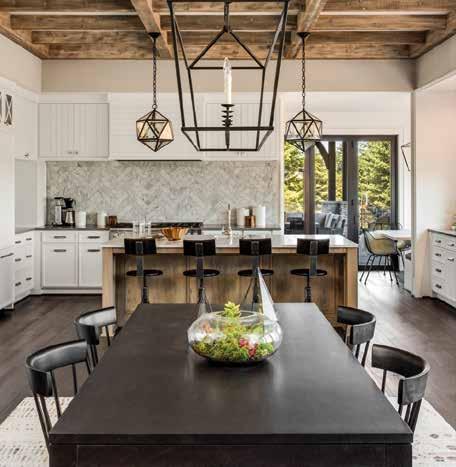
for themselves — in winning an offer to buy a home, understanding the steps involved in building or using home equity to finance a remodel.”
With home values rising significantly, tapping into your home equity for a loan is a great way to finance a remodel. “Having a solid idea of what your costs are going to be and where you’ll be putting those costs is very valuable when applying for a loan,” says Sveom.
And if you’re wondering what improvement yields the highest payback, he says that’s easy — the kitchen, living room or adding more square footage. In short, the places where you live the most — where life takes place.

“ ”
“We know this market and once we understand your goals and objectives, we can help you navigate it.”
— Trent Sveom, senior vice president residential and retail lending



Your dream room is achievable.
It’s easy to get overwhelmed by all those decisions involved with remodeling. But according to Shannen Nelson, designer at Waunakee Remodeling, the key is creating a space that works for you — and makes you happy.
“With the rise of home makeover shows and endless ideas online, there’s so much information,” she says. “You realize how much you can do to make your space unique to your taste — it doesn’t have to look like everyone else’s.”
While kitchens and baths are very different, some components of trends do cross over between the two — especially colors, style and materials. White cabinetry with shaker doors is still in style, but with a little more variety. Painted neutrals and darker jewel tones like navy and deep emerald, alongside natural or lightly stained woods are popular.
And don’t be afraid to mix and match within the same room. In a bathroom you might pair a painted vanity along with stained wood floating shelves. Or a kitchen might feature a stained wood perimeter with a painted island — or different colors on the base cabinets than on the wall cabinets. More color is also showing up in fixtures and cabinet hardware — with brushed golds, and matte black becoming popular.
Several flooring and counter trends are common to both kitchen and bath. You’ll see a lot of luxury vinyl tile and plank. But don’t worry. It’s come a long way since the old sheet vinyl — in durability, texture and appearance. And with its wide variety of colors and textures, quartz remains the most popular countertop. Both can be found at costeffective price points.
“In kitchens, you may be surprised to find that appliance garages are making a comeback,” says Nelson, “But now they’re used to store smart devices and hubs for laptops and tablets. Their rising popularity is due to all the smart

devices and technology that are part of our daily lives these days.” And in place of the old accordion-style doors, you’ll find standard doors that hinge left, right or up — blending seamlessly with surrounding cabinets.
Unsure where to start? “Remodeling a kitchen is a great place to begin,” Nelson says. “It’s the most ‘public’ area of the home, with more traffic — which adds resale value as well.” And with the large number of people working from home, Nelson says it’s also sparked requests at Waunakee Remodeling to create a small kitchen workspace. As the “heart” of the home, the design and material here can set the tone for the rest of your house. Choose what makes you happy.


Madison’s wealth of globally-inspired flavors won’t disappoint.
BY
CANDICE WAGENER | PHOTOGRAPHY BY HILLARY SCHAVE
There’s minimal travel involved to experience these palate-pleasing entrées from some new spots around town as well as old standbys.
Owners Zhao Zhao and Ziwen Wang (who’s also the chef) intentionally keep the menu small in order to perfect the dishes they serve, like the Spicy Beef Noodle Soup. A slow-simmered broth hosts beef shank, daikon radish, bok choy, carrots, cilantro and scallions. This version packs a chili paste punch, but you can opt for the milder version if you prefer. hutongmadisonorder. com/order
The Monroe Street neighborhood is known for restaurants that are intimate and one-of-akind, and the newly-opened, French-inspired Kettle Black Kitchen is no exception. The menu is modest, but roasted cornish hen is
on it — an unusual find around town — so take advantage. And if you just want a comfy meal at home, Kettle Black also offers a small selection of meal kits you can heat and eat in your own kitchen. kettleblackkitchen.com
This local chain has grown to three locations in the past decade, offering worthy suburban dining options in Verona and DeForest. Seafood and barbecue are faves in Wisconsin, even if they’re harder to come by, and North & South Seafood & Smokehouse offers both in winning style.
Indulge in The Boise, baked salmon served with a hearty crust of shredded potatoes and a lemon garlic cream sauce crossing several taste buds in one bite. Also, hush puppies are rarely found in northern states, but you can find them here. eatnorthandsouth.com
In a Midwestern city with a surprising amount of good ramen options, Ramen Station is another dependable choice.
The Tonkotsu ramen is delightful, with a slow-simmered broth generously appointed with chunks of roasted pork and the signature Ajitsuke Tamago (softboiled egg with jammy yolks, marinated overnight in soy sauce). Scallions, bean sprouts and fish cakes round off the color and crunch in this dish. ramenstationwi.com
With an airy, light-filled space facing the Capitol, Wonderstate is a cheerful meeting place. The Winter Market Salad is a palate pleaser with a mix of local goodness: greens from Don’s Produce in Arena, honeycrisp apples from Barnard Farms in Door County and Moody Blue smoked blue cheese from Roth Kase

in Monroe. Dressed with a fermented cranberry mustard vinaigrette, and sprinkled with pickled red onions and spiced pecans, this is an unforgettable salad. wonderstate.com






A long-term resident on East Washington, La Taguara is a family-owned spot serving Venezuelan specialties in a colorful dining room that transports you to South America during your visit. Arepas, empanadas and tostones are all crispy delicacies that will leave you satisfied and happy, and their weekend brunch and lunch specials are top-notch.
But the dish you’ll want to work into your repertoire is the Pabellón. Touted as Venezuela’s national dish, this heaping plate of saucy black beans, tender shredded beef, gooey cheese and rice is the ultimate comfort food. They even make a junior-sized version for the littles. lataguara-madison.com



Candice Wagener is a freelance writer who enjoys telling stories that intrigue, inform and inspire.
Spring arts events you’ve got to experience in person.
BY JESSICA STEINHOFF

CTM: “Calabasas Street”
March 12-27, Madison Youth Arts Center ( MYARTS )
A chance encounter in a neighbor’s backyard leads young Domingo Sanchez to discover the transformative power of art. Told in English and Spanish, this performance also offers sensory-friendly accommodations. ctmtheather.org

Tig Notaro
March 16, Orpheum Theater
Notaro is a master of deadpan delivery, which shines in her stand-up sets, her podcast “Don’t Ask Tig” and her semi-autobiographical TV show, “One Mississippi.” She’s also inspired many with her bravery, candidly discussing her breast cancer diagnosis on stage. madisonorpheum.com
Madison Ballet’s “Turning Pointe”
March 25-27 & April 1-3, Overture Center
Madison Ballet bids farewell to Artistic Director Sara Stewart Schumann with a program that pays homage to the past with Gerald Arpino’s 1986 Birthday Variations and looks to the future with a restaging of works from “Lift Every Voice,” the popular film series the company launched in 2021. overture org
Fortune Feimster: “2 Sweet 2 Salty”
March 25, Barrymore Theatre
After a successful run as nurse Collette Kimball-Kinney on “The Mindy Project,” this lovable comic has landed all sorts of television work in the past few years, including roles in “Tales of the City” and “The L Word: Generation Q.” For a taste of her confessional style of stand-up, watch “Sweet & Salty,” her 2020 Netflix special. barrymorelive com
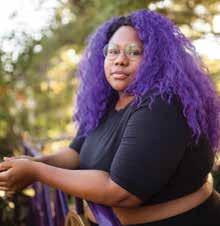
Black Arts Matter Festival
March 23-26, Memorial Union
Organized by slam poet Shasparay Irvin (above), who got her start in UW-Madison’s First Wave program, this event showcases a range of Black artists, voices and art forms while asking audiences what it means to include and celebrate people of color and their creative work. union.wisc.edu
Wisconsin Film Festival
April 7-14, multiple venues
With roughly 150 film screenings spread across eight days, this fest is bound to make you think, laugh, cry and cheer — possibly all at once. Whether you gravitate toward avantgarde debuts or critically acclaimed classics, you’ll find something that piques your interest. Be sure to check out some of the Wisconsin’s Own selections, which feature filmmakers, settings and themes from the Badger State. wifilmfest org

Madison Symphony Orchestra with Gil Shaham
March 11-13 Overture Center
One of the world’s most celebrated violinists visits Madison to solo on Beethoven’s one and only violin concerto. Rachmaninoff’s “Isle of the Dead” and Kodály’s “Háry János Suite” round out this must-see — and must-hear — program. overture.org
Greta Van Fleet
March 22, Kohl Center
If Led Zeppelin were founded by Gen Z musicians, they might sound like this bluesy, hard-rocking crew. Frontman Josh Kiszka’s vocals bear an uncanny resemblance to Robert Plant’s, and he and his bandmates are in their element at arena shows like this Kohl Center gig. go.wisc.edu/gretavanfleettix2022

Wisconsin Chamber Orchestra with Eric Silberger
March 25, Overture Center
Craving more violin pyrotechnics? This concert, featuring Paganini’s fiery “Violin Concerto No. 1” is just the ticket. The evening’s soloist is a prizewinning virtuoso who performs on a rare J.B. Guadagnini violin crafted in 1757. overture. org
Exploring the depth and range of art being created in our state is the goal of the Wisconsin Triennial, a grand exhibition the Madison Museum of Contemporary Art mounts every three years. In 2022 the Triennial turns its attention to artists who are Black, female and often overlooked with a thoughtprovoking exhibition titled “Ain’t I a Woman?” (April 23-Oct. 7). Curated by Fatima Laster of Milwaukee’s 5 Points Gallery & Studios, it highlights works by nearly two dozen artists. The name of the exhibition comes from abolitionist Sojourner Truth and feminist bell hooks, explains Laster. “It asks, ‘Don’t I deserve to be acknowledged, seen, given worth and recognized as a human or spiritual being, and as the positive contributor I am?’ The exhibition highlights the resilience and brilliance that exists and persists in spite of [these barriers],” she says. mmoca.org

An all-Beethoven concert for the ages, charged with the energy and invention of the master’s Heroic Period and the spectacular pianism of a towering artist of magisterial interpretive and technical prowess.
John DeMain , Conductor Garrick Ohlsson , Piano
Beethoven , Egmont Overture
Beethoven , Piano Concerto No. 5 in E-flat major, “Emperor”
Beethoven , Symphony No. 5 in C minor
Tickets $20–$98. Discover more: madisonsymphony.org/beethoven
PRESENTING SPONSOR
Myrna Larson
MAJOR SPONSORS
NBC 15
Stephen D. Morton
Diane Ballweg
Kenneth A. Lattman Foundation, Inc.
Scott and Janet Cabot
Godfrey & Kahn, S.C.
David and Kato Perlman
Fred A. Wileman
ADDITIONAL SPONSORS
Chuck Bauer and Chuck Beckwith
Ronald J. and Janet E. Johnson
Wisconsin Arts Board
“DeMain pulls a glorious sound spectacle from his inspired players.”
– John Barker, Isthmus
We

MAY 6, 7 & 8 FRI 7:30 PM SAT 8:00 PM SUN 2:30 PM

Ohlsson:
“. . . an incredible technique with razor-sharp accuracy, producing a sound so lush it almost glistens.”
– Seattle Times

TAKE A SECOND LOOK | This issue is brimming with interesting women and stories — here are some outtakes. Top: Dr. Christina Outlay took over as executive director of Maydm in January 2022. Maydm is a Madison-based nonprofit aimed at bringing girls and students of color into STEM (science, technology, engineering and math) programs. Pieces by artist Lilada Gee hang behind Outlay, who is also featured in our “Girl Power” feature on P. 31. Right: Hutong Madison’s beef noodle soup has a base of beef broth with spices along with beef shank, cilantro, scallions, daikon radish and bok choy, which makes for a tasty treat on a chilly day. Middle: Corinda Rainey-Moore sits with Madison East High School students during a Queen Leadership Academy gathering. RaineyMoore (who was a BRAVA 2016 Woman to Watch) founded the group for girls who are experiencing attendance challenges, at risk of dropping out or being in contact with the juvenile justice system, and first-generation college applicants. Bottom: It’s not every day you see an office with Wisconsin’s wildlife in it — but Petra Zwettler works at the Forest Products Laboratory for the U.S. Forest Service in Madison.

